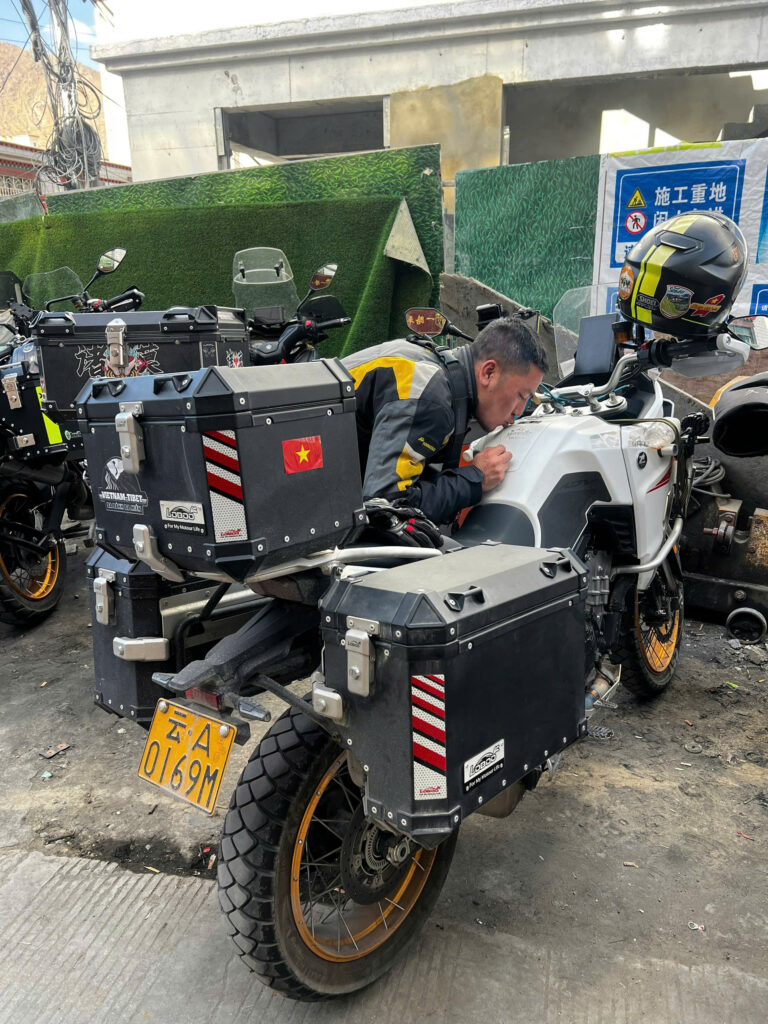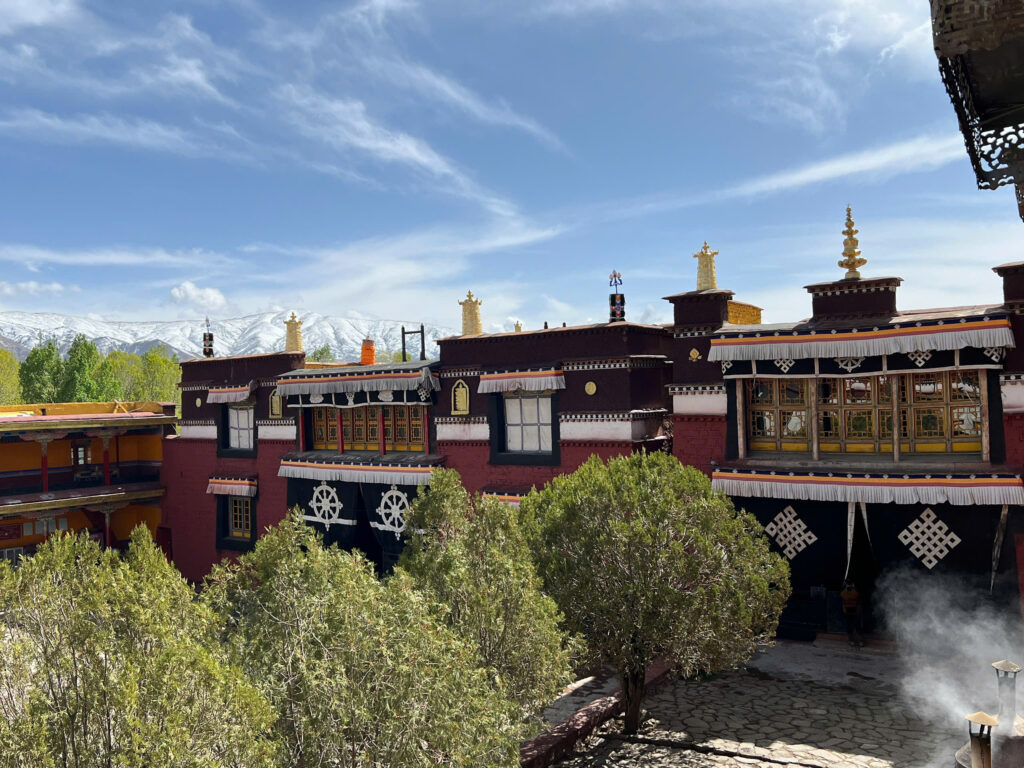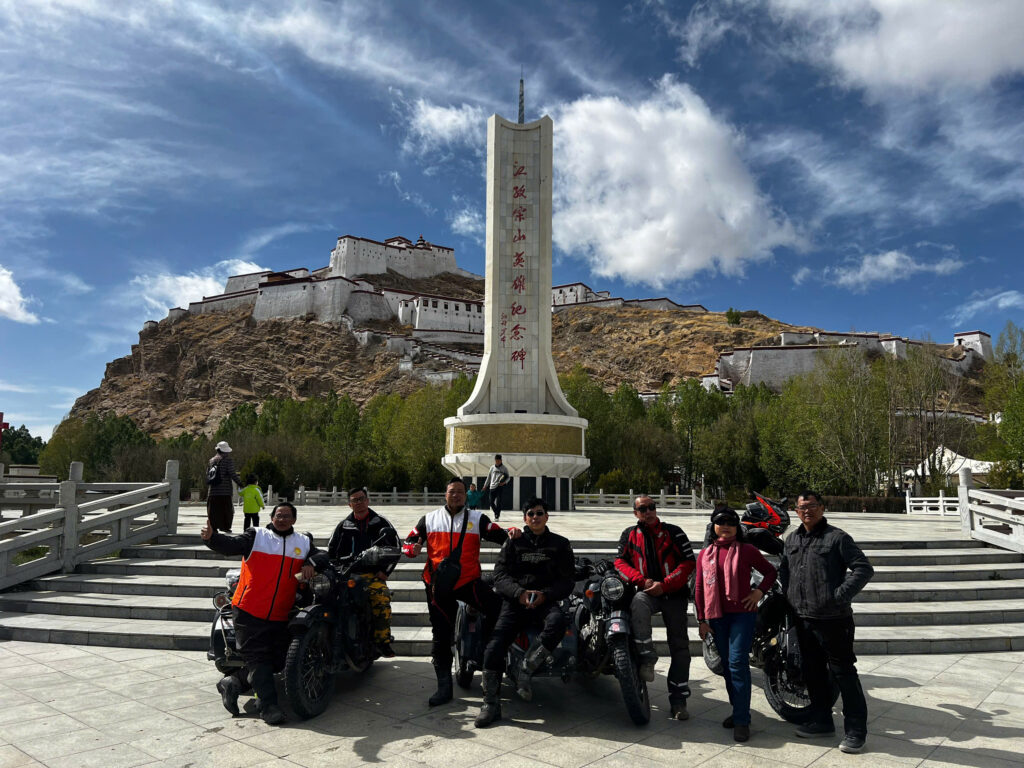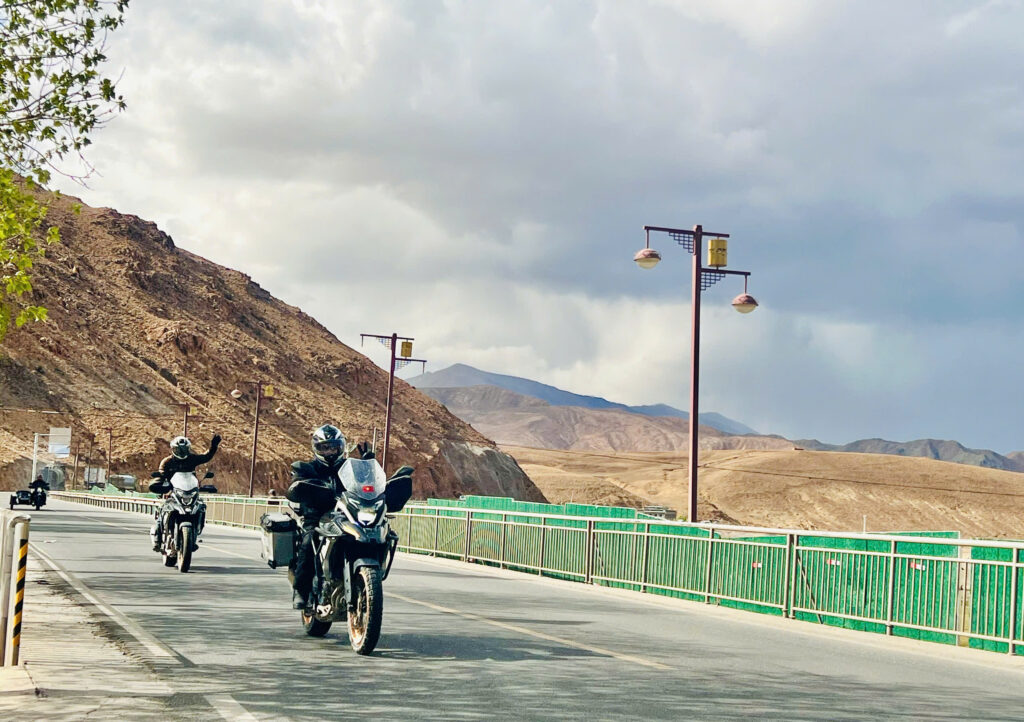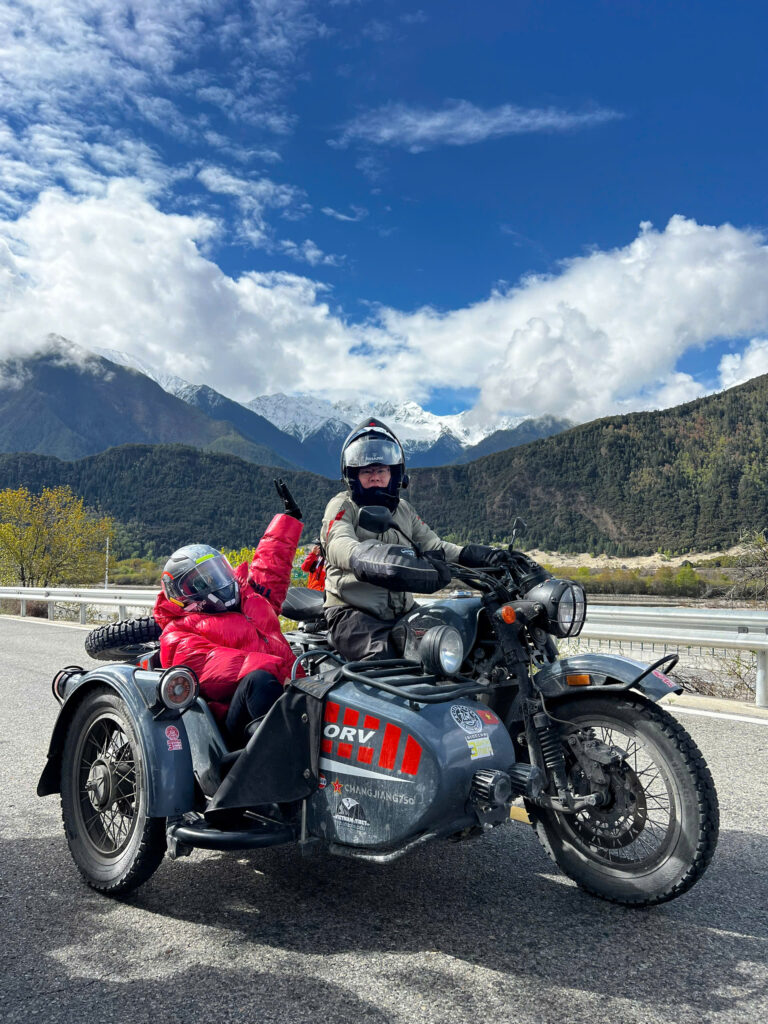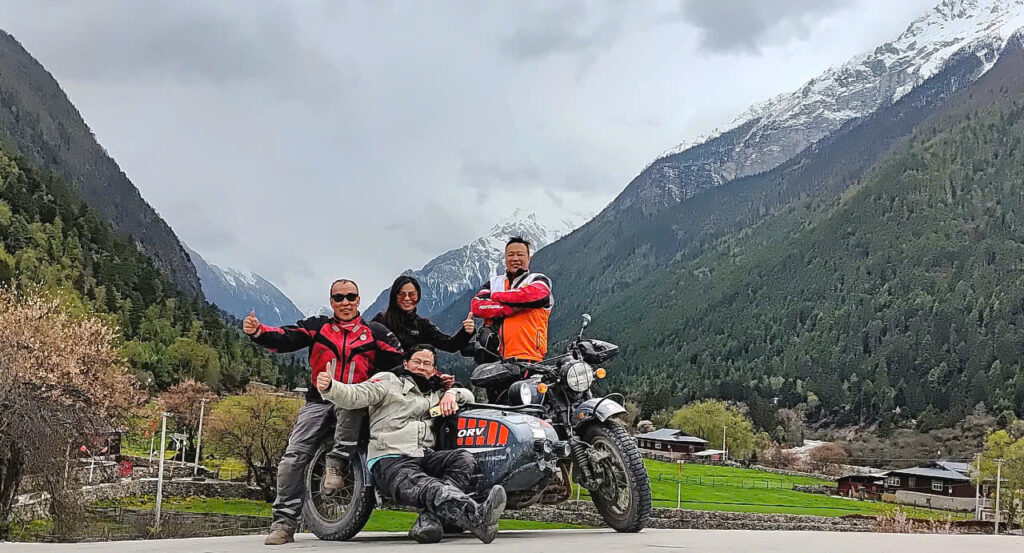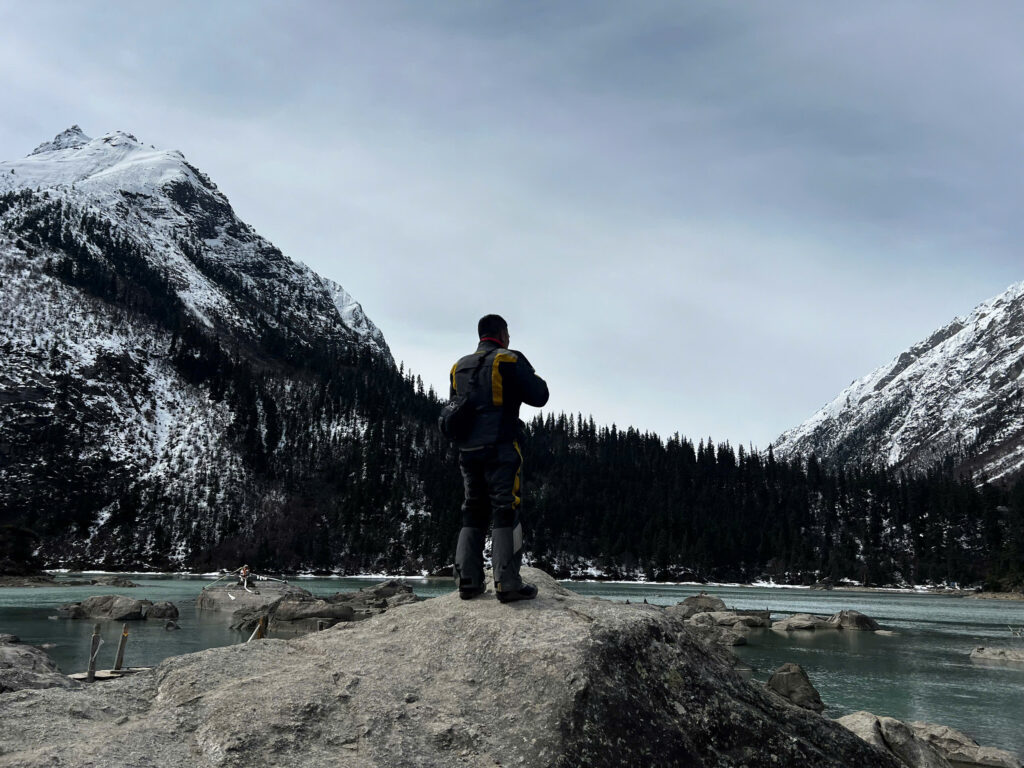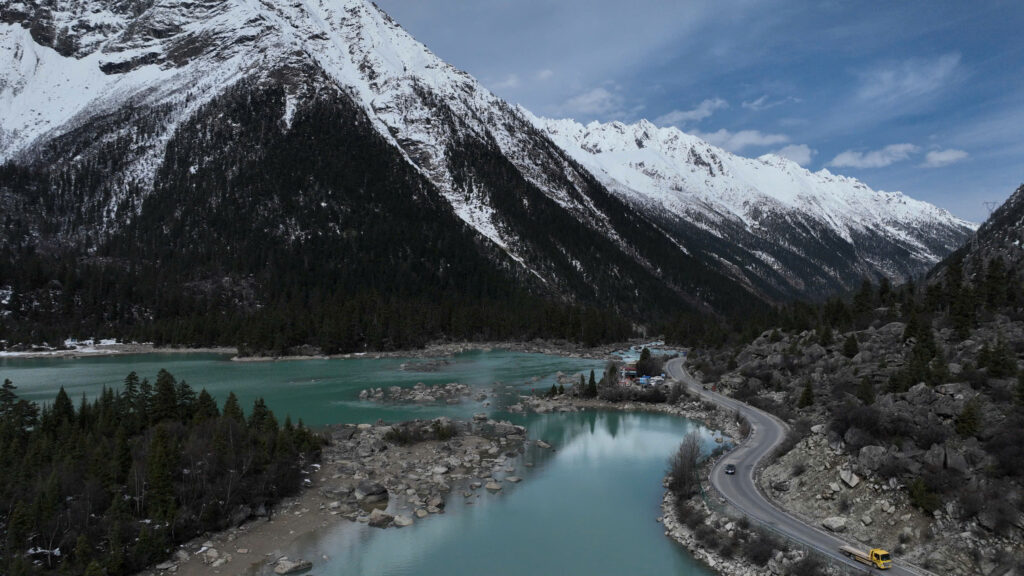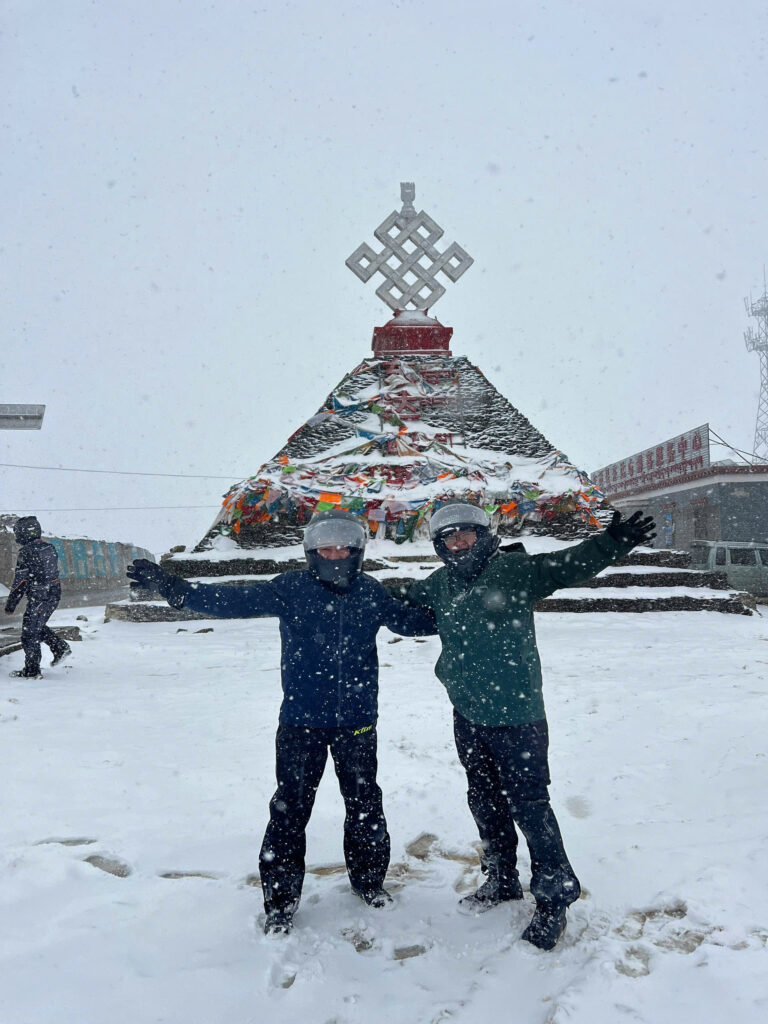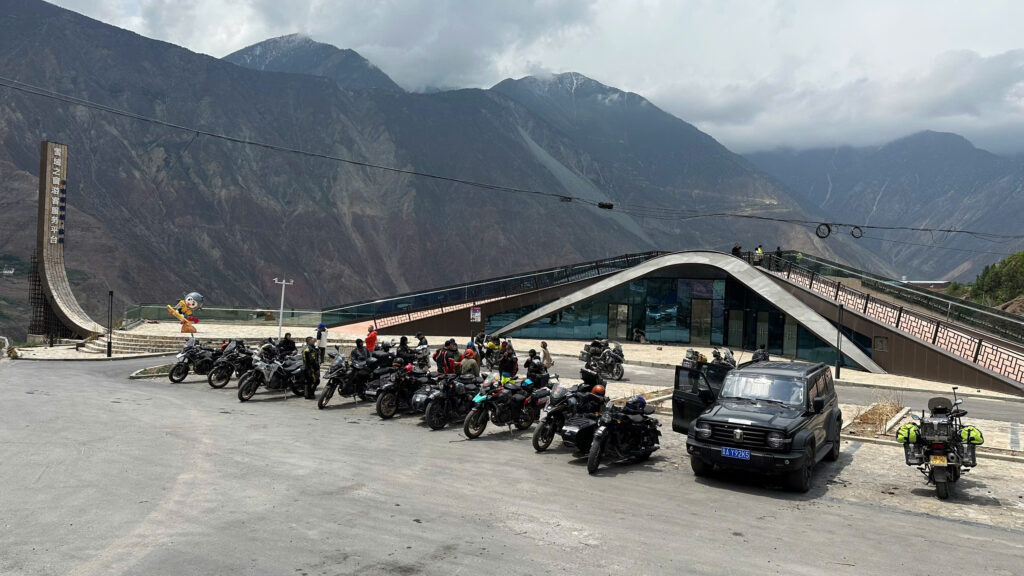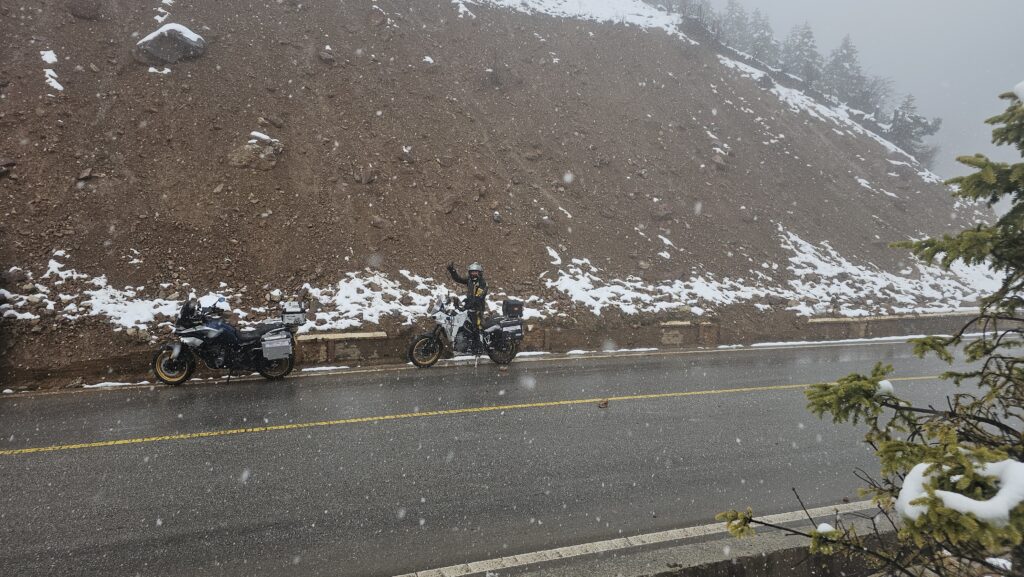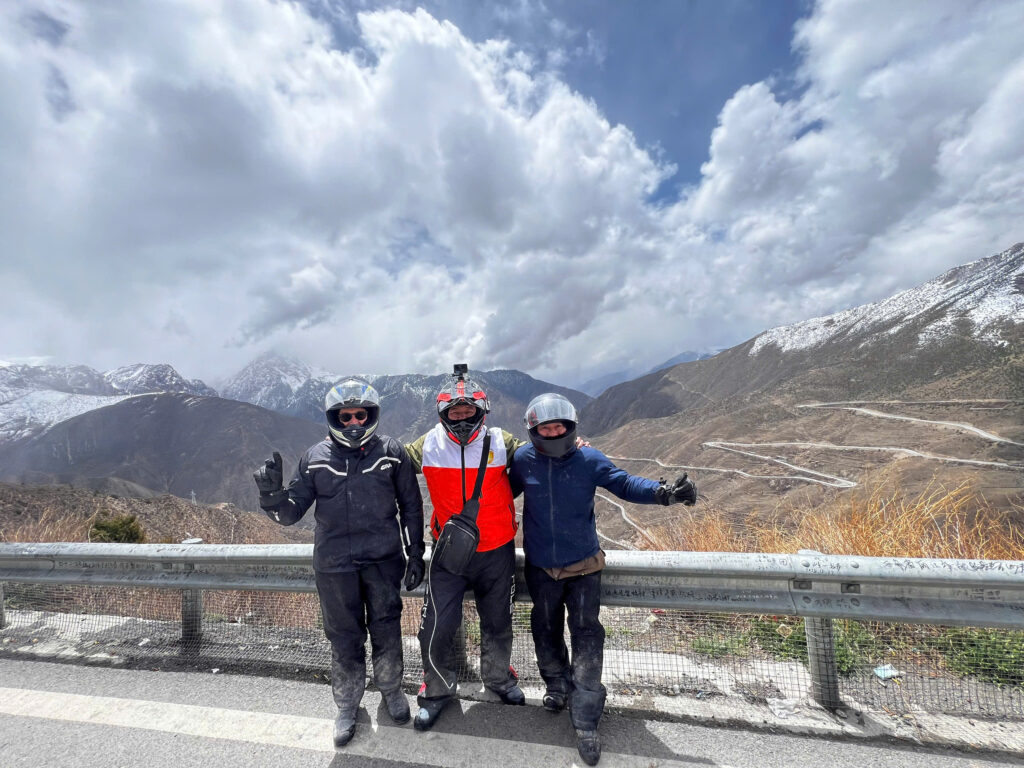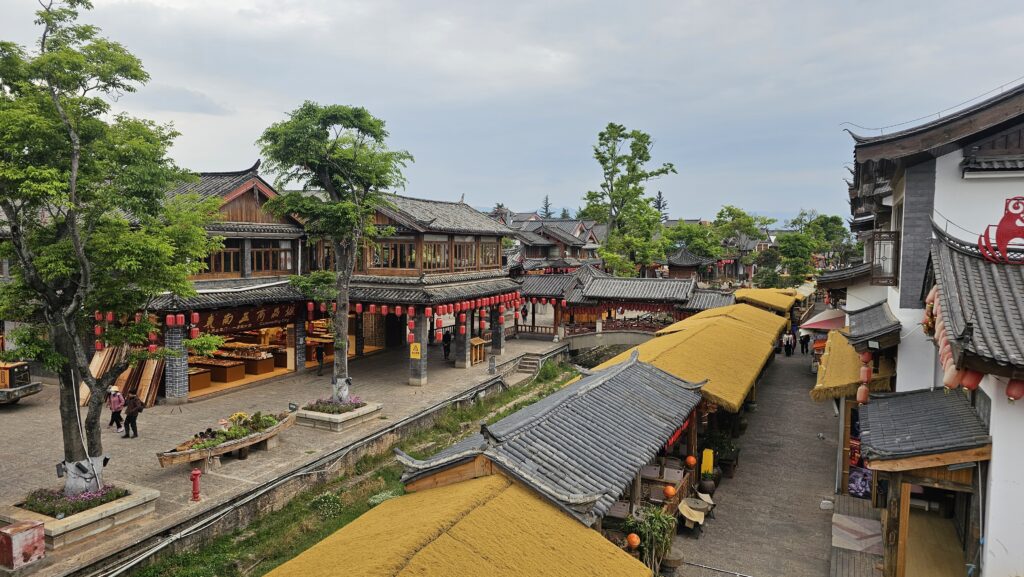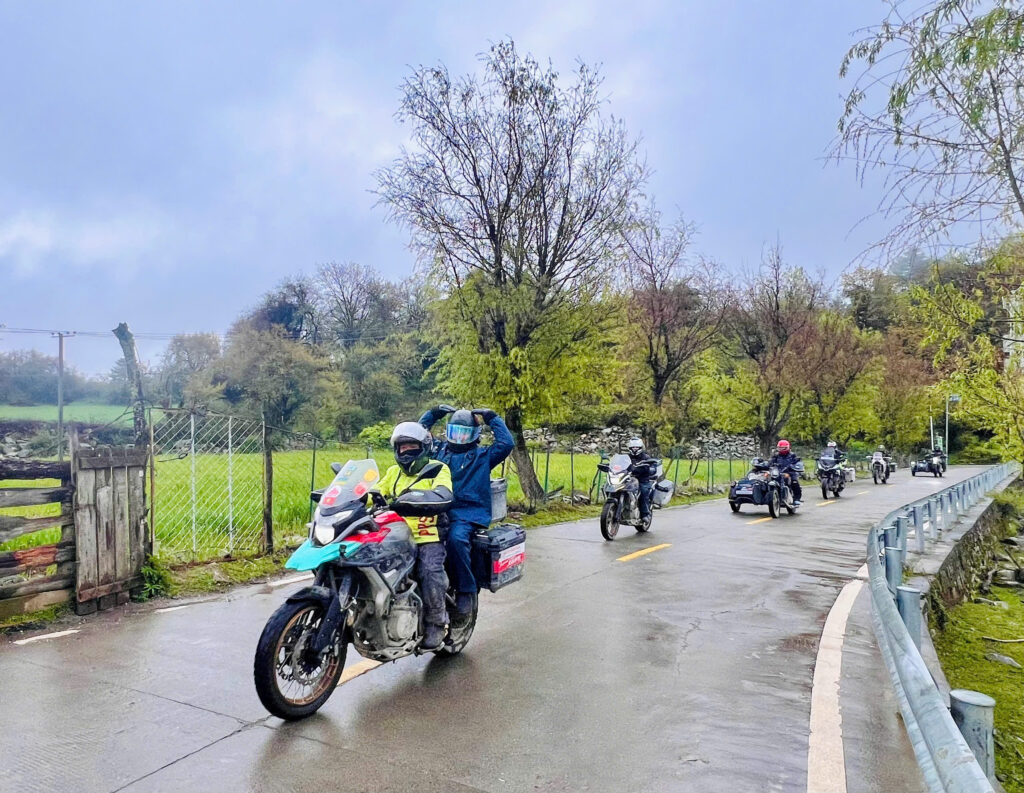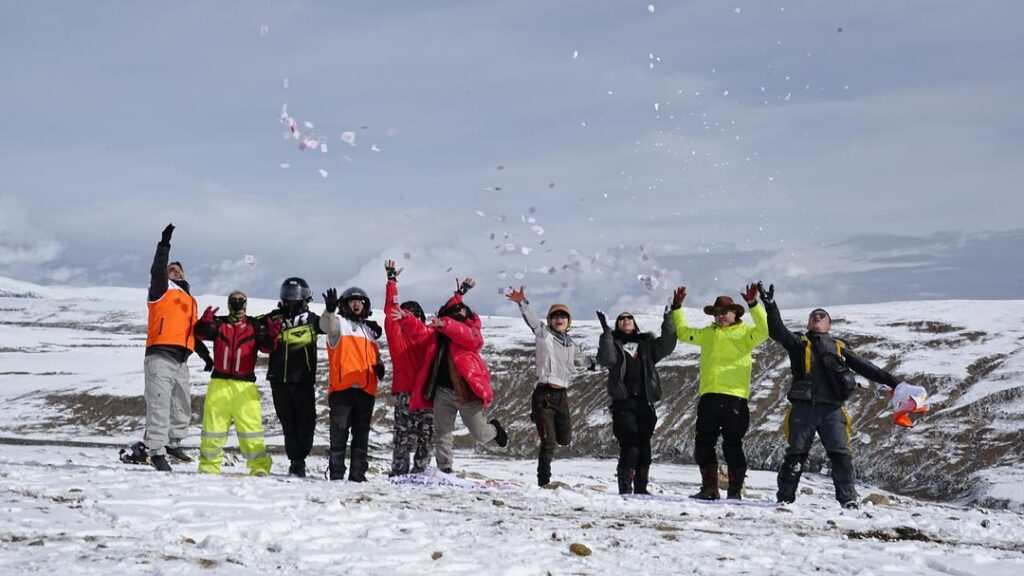THE MYSTICAL JOURNEY THROUGH YUNNAN – TIBET – EVEREST BASE CAMP
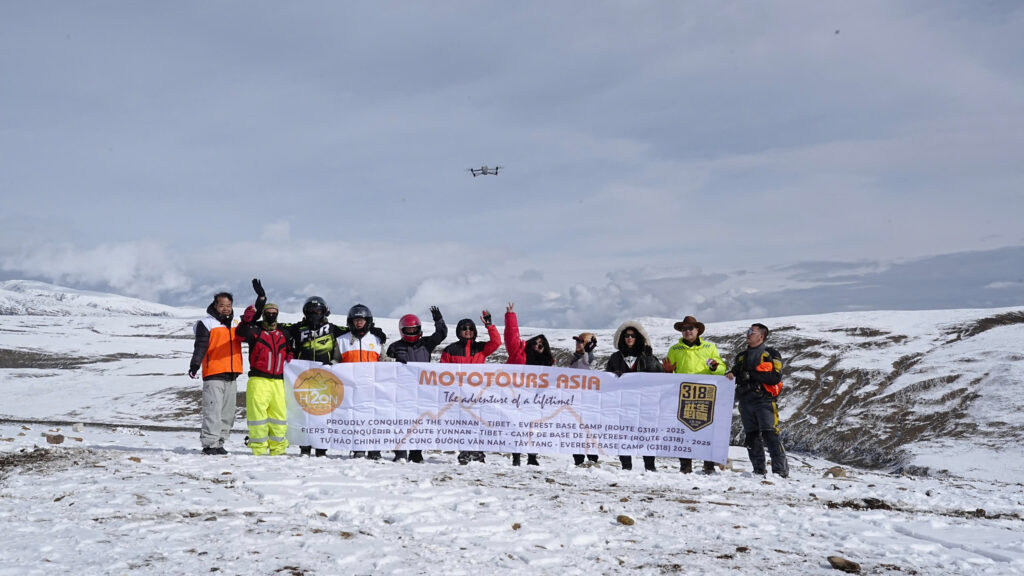
A WINTER JOURNEY – EXTREME CHALLENGES AND A HIMALAYAN PARADISE
Tibet is a mysterious land, known as the “Third Pole” of the world, with the Roof of the World—the majestic Himalayas—and its eternal snow-capped peaks. Tibet has always been a paradise on earth, a sanctuary for the gods. It is a magnificent, magical land that is both beautiful, harsh, and sacred. People call Tibet a land between reality and myth, filled with spirituality and mystery.
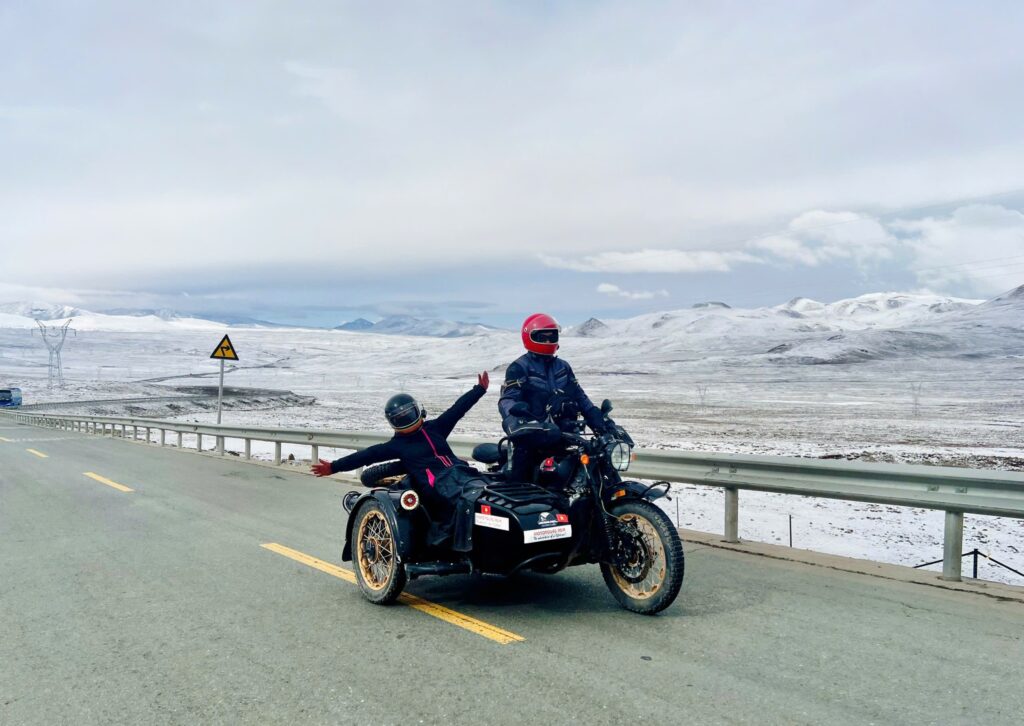
The tour program “LUNAR NEW YEAR & LOSAR FESTIVAL ON THE ROOF OF THE WORLD” from MotoTours Asia is not just an ordinary itinerary. It’s a chance to conquer your own limits in the harsh winter to enjoy a magnificent, otherworldly paradise that is more beautiful at this time than any other. You can close your eyes, take a picture, and any shot will be a masterpiece. This program also gives us a unique opportunity to not only explore but also immerse ourselves in the spiritual culture of Tibet during the special Losar Festival, which coincides with Tet Nguyen Dan this year (February 17th and 18th).
The legendary Ancient Tea Horse Road is a silk ribbon that winds its way over giant peaks, waiting for you to etch your own epic adventure story. The Ancient Tea Horse Road is more than just a road; it is a living bridge connecting unique cultures and the majestic panoramic views of the Himalayas. With every treacherous pass you conquer, such as Milashan (5,250m), Jiacuola (5,252m), or Jiawula (5,208m), you will discover a hidden strength within yourself.
Amidst the vast expanse of the journey, we will get lost in the serene beauty of ancient Tibetan villages and sacred monasteries nestled in the clouds. These are moments to fully immerse yourself in the peaceful rhythm of life, creating a special connection with the local culture and people. This trip is a journey of self-discovery, awakening potential and affirming an indomitable will, where every difficulty overcome is a personal victory, making it truly the journey of a lifetime.
Conquering G318 with MotoTours Asia is more than a trip; it’s a journey of self-discovery, awakening potential and affirming an indomitable will. Let us be your companion, carving your name onto the “Roof of the World” together!
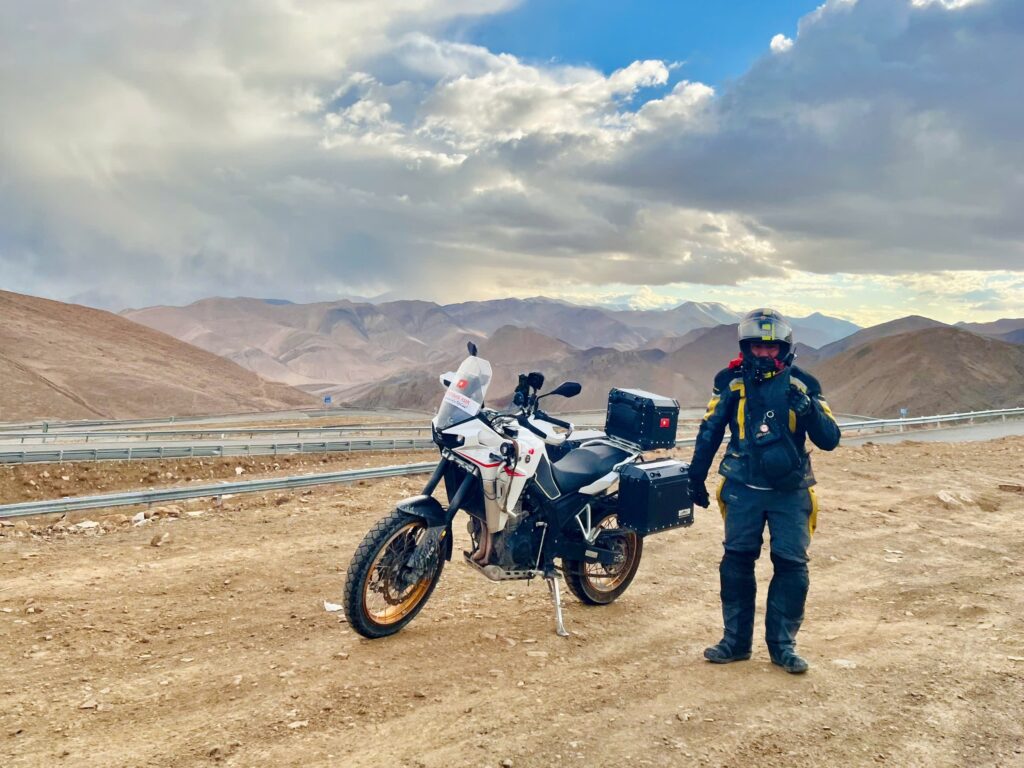
DETAILED ITINERARY:
| Day | From | To | Distance (km) | Driving Time (h) | Altitude | |
| 1. 3/2/2026 | HANOI | DIEN BIEN | 0 | 0 | 479m | |
| 2. 4/2/2026 | DIEN BIEN | BOTEN (LAOS) | 280 | 5 | 415m | |
| 3. 5/2/2026 | BOTEN | PUER (CHINA) | 280 | 4 | 1,306m | |
| 4. 6/2/2026 | PUER | DALI | 450 | 5 | 2,007m | |
| 5. 7/2/2026 | DALI | BALAZHEN | 360 | 6 | 3,000m | |
| 6. 8/2/2026 | BALAZHEN | YANJING | 230 | 4 | 2,650m | |
| 7. 9/2/2026 | YANJING | MARKAM | 130 | 2 | 3,875m | |
| 8. 10/2/2026 | MARKAM | BANGDAZHEN | 250 | 5 | 4,170m | |
| 9. 11/2/2026 | BANGDAZHEN | BOME | 300 | 5 | 2,725m | |
| 10. 12/2/2026 | BOME | NYINGCHI | 220 | 4 | 2,930m | |
| 11. 13/2/2026 | NYINGCHI | LHASA | 390 | 5 | 3,656m | |
| 12. 14/2/2026 | LHASA | LHASA | 0 | 0 | 3,656m | |
| 13. 15/2/2026 | LHASA | LHATSE | 410 | 6 | 4,035m | |
| 14. 16/2/2026 | LHATSE | TINGRI | 180 | 3 | 4,348m | |
| 15. 17/2/2026 | TINGRI | DINGGYE | 140 | 5 | 4,400m | |
| 16. 18/2/2026 | DINGGYE LOSAR | 100 | 2 | 4,400m | ||
| 17. 19/2/2026 | DINGGYE | GYANTSE | 220 | 4 | 3,977m | |
| 18. 20/2/2026 | GYANTSE | LHASA | 260 | 4 | 3,656m | |
| 19. 21/2/2026 | LHASA | DEPARTURE | 0 | 0 |
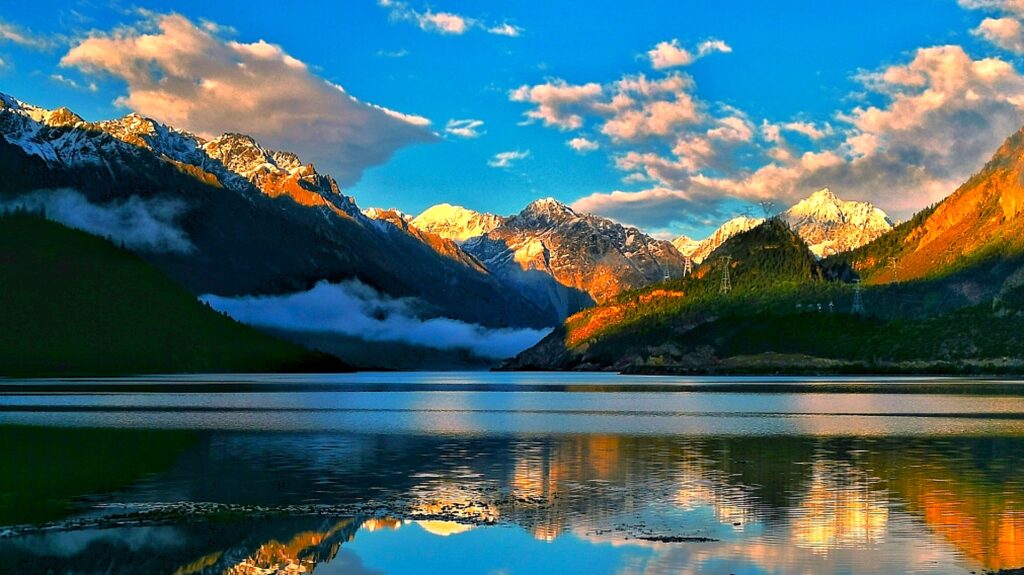
DETAILED ITINERARY:
Day 1: 3/2/2026: HANOI – DIEN BIEN, 450km
You can choose to either transport your bike to Dien Bien and take a night bus, or fly directly from Hanoi to Dien Bien. The cost of the flight ticket and bike transportation to Dien Bien is not included.
At 5:15 a.m., the group will gather at the gate of the National Convention Center, on Thang Long Avenue, Me Tri, Hanoi.
At 5:30 a.m., the group will depart and stop for breakfast at a local restaurant along Highway 6. We will continue our journey through the Moc Chau prairie and Son La plateau, conquering the Pha Din Pass before heading to Dien Bien.
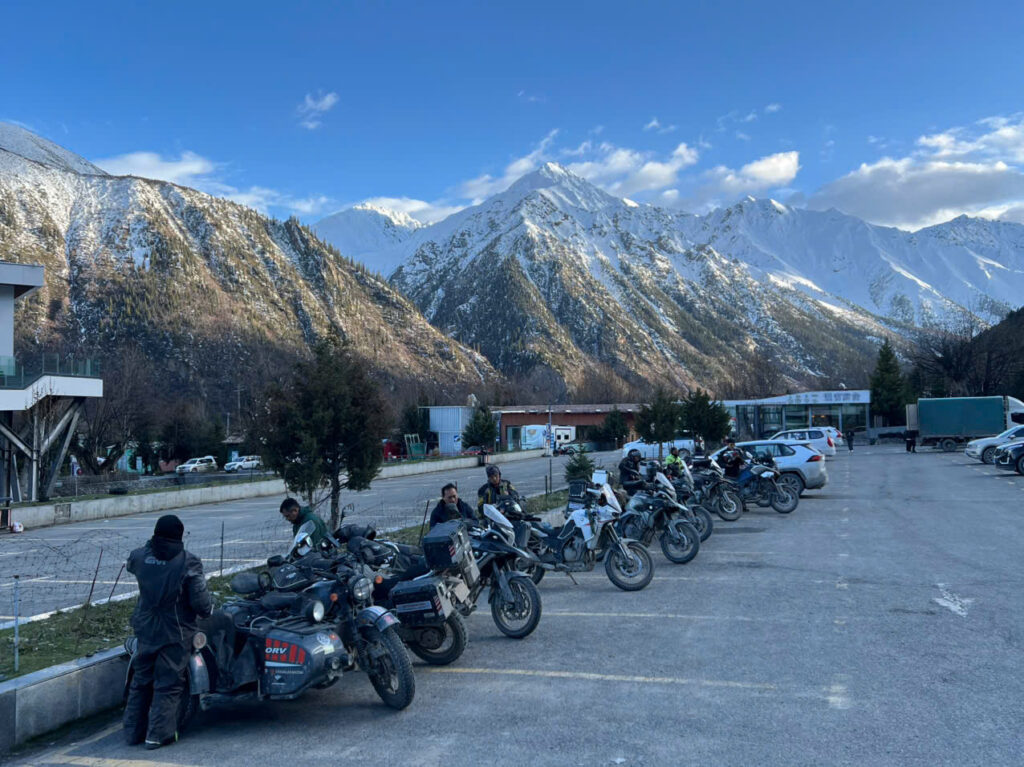
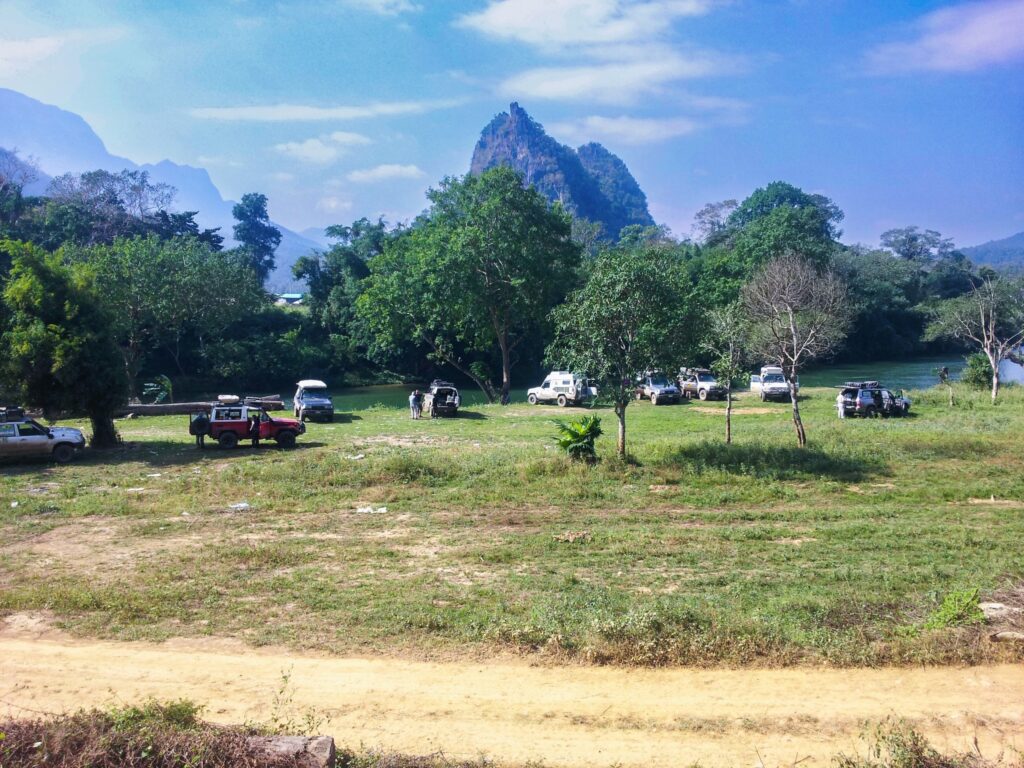
Dien Bien is about 450km from Hanoi. It is not only famous for its heroic historical sites but also a land with diverse cultures and natural landscapes. It is a place that went down in world history with the Dien Bien Phu Victory in 1954. This four-month battle between the French and Viet Minh armies marked a decisive turning point, ending French colonial rule in Indochina and opening an era of independence for Vietnam. You will feel the historical atmosphere when you set foot here, a place that was once a fierce battlefield but has now become a symbol of courage and an indomitable will.
If you wish, you can arrive 1-2 days in advance to explore the historical sites and ethnic minority villages around Dien Bien.
Day 2: 4/2/2026: DIEN BIEN – BOTEN (LAOS), 280km – CROSS-BORDER JOURNEY & LEGENDS

Today, we will begin our cross-border journey, leaving Dien Bien for Tay Trang to complete the exit procedures from Vietnam to Laos. This is a promising leg of the journey, taking you from the historical land of Vietnam through the ethnic minority villages of Laos to a unique border town, Boten. The process of exiting Vietnam and entering Laos takes about 2 hours, so we need to leave Dien Bien early.
Boten – A Crossroads of Diverse Cultures: Boten is a town located right on the Laos-China border, opposite the Chinese town of Mohan. The special thing is that although it belongs to Laos, most residents in Boten speak Mandarin (Chinese) as their mother tongue, and the town operates on Beijing time. This creates a unique blend of cultures right at the gateway to Laos, where visitors can witness the interaction between two major cultures.
Boten is in the process of transforming from a gambling hub (it once had a large casino that attracted Chinese tourists but was closed in 2011) to a logistics and tourism center, driven by the opening of the Vientiane–Boten railway in December 2021.
Day 3: 5/2/2026: BOTEN – MOHAN – PUER, 280km – THE SCENT OF THE ANCIENT TEA HORSE ROAD & ETHNIC DIVERSITY
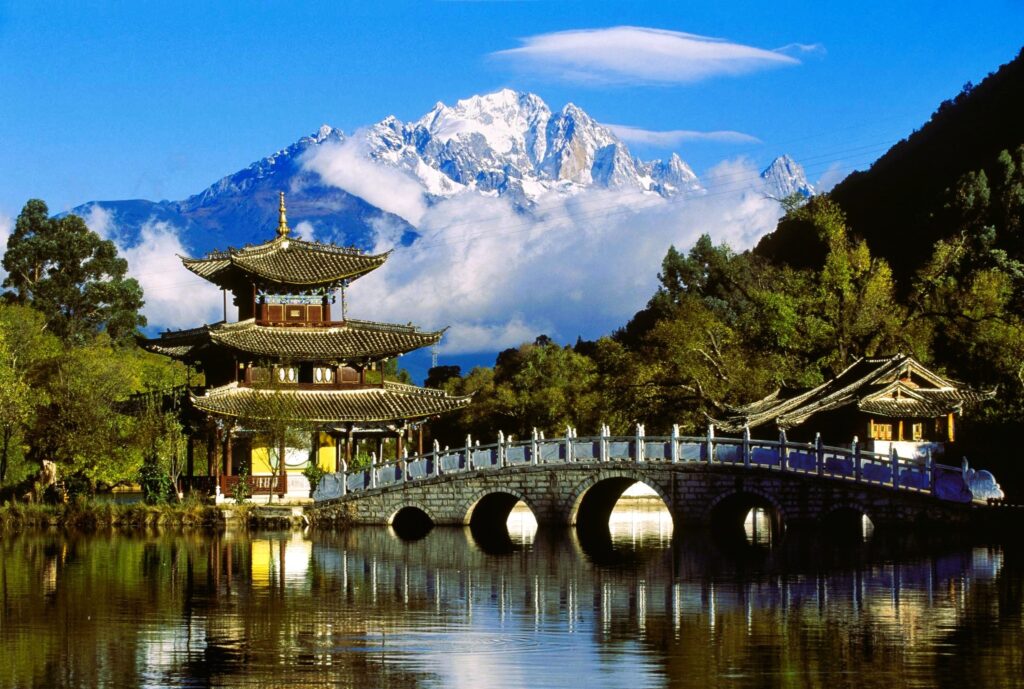
Today’s journey requires an early start. We need to complete the exit procedures from Laos and enter China, followed by a stop at the police station in Mengla to exchange our driver’s licenses before heading to Puer.
Today’s route will take you to the homeland of many ethnic minority groups, including the Thai, Miao, Dao, Hani, and many others. The journey also passes through lush green fields and endless tea hills. The scenery gradually changes, signaling the proximity of Puer, a city famous for its tea heritage.
Puer – The Cradle of Legendary Puer Tea: The main destination for the day is Puer, a city nestled among the misty mountains of Yunnan province, where a special type of tea has been aged and preserved for centuries: Puer Tea. With a history spanning over 1,700 years, since the Tang Dynasty, Puer Tea is one of the world’s oldest and most revered tea traditions.
Initially, Puer Tea was valued more for its medicinal properties than as a regular beverage. Later, to make it easier to transport and preserve, locals pressed the tea leaves into cakes—a method that is still maintained today. By the Song Dynasty, Puer Tea had been recognized by the imperial court and became a favorite of officials, especially Emperor Qianlong of the Qing Dynasty, who had special warehouses built to store this tea. His passion turned Puer Tea from a regional specialty into a national treasure, at one point even more valuable than gold.
Puer was also a key hub on the ancient Tea Horse Road, established around the 7th century. This 1,400-mile long network of roads, traversing treacherous mountain passes, was not only the main route for transporting Puer Tea from Yunnan to Tibet and beyond but also a crucial corridor for cultural exchange. The tea porters, known as “tea horses,” carried hundreds of pounds of compressed tea on their backs, making arduous journeys that lasted for months through the challenging Himalayan terrain. What makes Puer Tea special is that it gets better with age, a quality that makes it a form of mobile property whose value increases over time.
Day 4: 6/2/2026: PUER – DALI, 450km ~5h (2,000m)
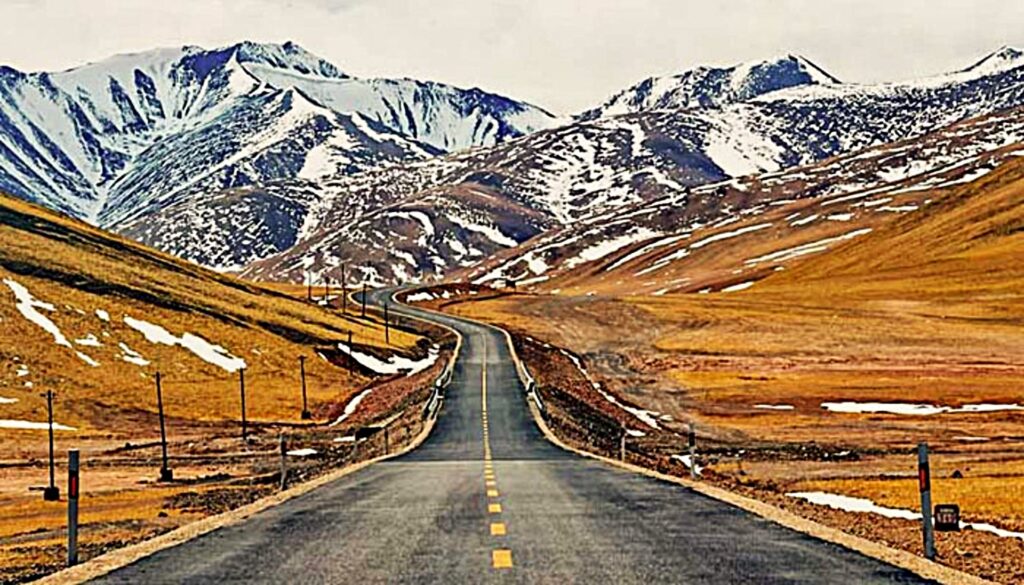
Today’s journey will take us from Puer to Dali, the longest leg of the trip, and we will be using the highway today. The drive from Puer to Dali takes about 5 hours. We will leave early to arrive in Dali for lunch, check into the hotel, and explore the ancient town of Dali in the afternoon. This is the ancient town of the familiar hero Guo Jing from Vietnamese audiences.
Dali is a historical city situated between the majestic Cangshan Mountain to the west and the poetic Erhai Lake to the east. The ancient city of Dali dates back to 1382 during the Ming Dynasty and was once the ancient capital of the Nanzhao Kingdom and the Dali Kingdom. With its magnificent city walls and traditional houses of the Bai people with their distinctive blue-gray tiled roofs, Dali possesses a unique beauty compared to other Chinese cities. Strolling along the cobblestone streets and among the ancient houses, visitors will feel as if they have been transported back in time to a simpler world of the distant past.
Day 5: 7/2/2026: DALI – LIJIANG – BALAZHEN, 360km – A FAIRYTALE WORLD & NAKHI LEGENDS
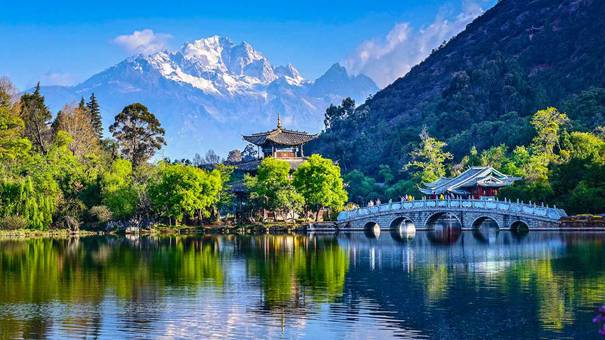
Today’s journey will take us from Dali to Lijiang, an ancient city recognized by UNESCO as a World Heritage Site. This leg of the journey will be a captivating experience, from the roads along Erhai Lake to the lush green valleys leading into Lijiang, where we will spend some time visiting Lijiang’s characteristic bridges. Afterwards, we will continue on to Shangri La for lunch. In the afternoon, we will drive the remaining 70km to Balazhen.
Lijiang is one of the most important centers of ancient human activity in Southwest China, with archaeological evidence from the Neolithic period. The Nakhi people, the local rulers, were granted autonomy under the Mongol Empire and later the Yuan Dynasty, and they supported the Ming Dynasty in expanding its territory in Southwest China.
Balagezhong is a village with a legendary story about the person who literally paved the way, bringing this village from obscurity to where it is today. Conquering this very road allows us to see the villagers’ determination to build a road that even scientists marveled at.
Day 6: 8/2/2026: BALAZHEN – YANJING, 230km – THE ANCIENT TEA HORSE ROAD & ANCIENT SALT WELLS
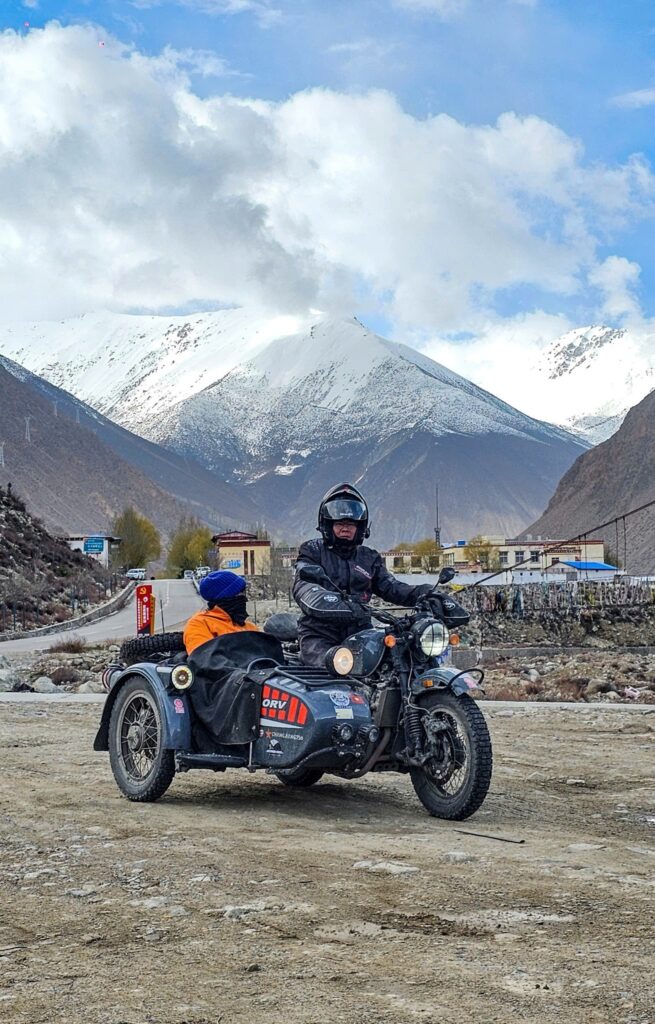
Continuing our journey from Balazhen, we will drive past a bend in the Jinsha River before conquering the Baimang Snow Mountain Pass at an altitude of 4,500m. We’ll admire the stunning scenery of the Meili Peak before following the Lancang River to Yanjing, a Nakhi town in Mangkam County, Tibet Autonomous Region. This takes you deeper into the rugged mountains, where winding roads tell the story of the legendary Ancient Tea Horse Road and the traditional salt-making trade. Tonight, we will participate in a dinner with unique cultural features at a traditional local restaurant. This is also where we will complete the entry procedures into Tibet at the military checkpoint at the beginning of Yanjing village.
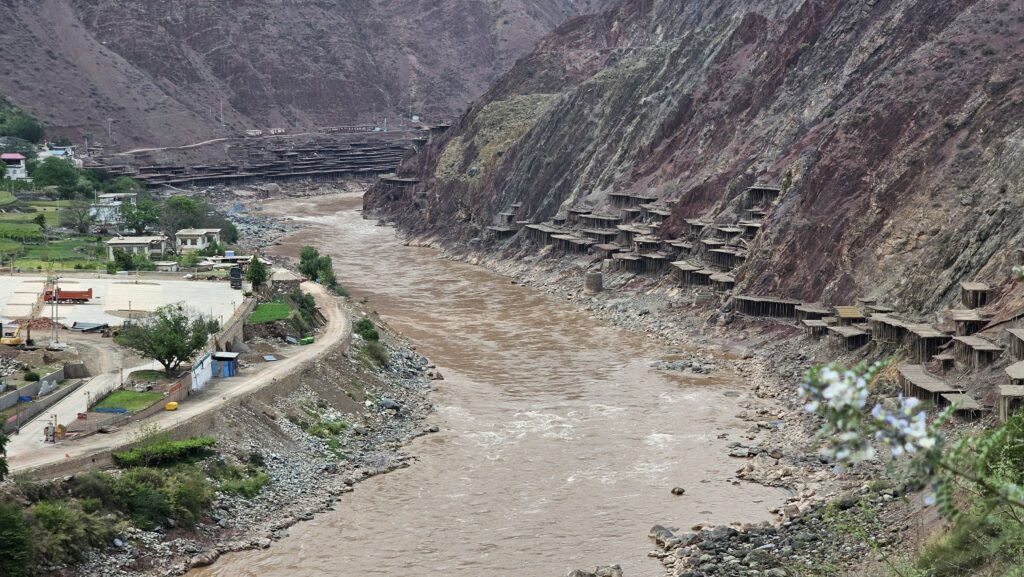 Historically, Yanjing was the main route for tea to be transported into Tibet. It is famous for its ancient salt wells, with a history of about 1,300 years, which made it a wealthy land thanks to the traditional salt-making trade. This is also the only remaining cultural landscape of the original manual salt drying method on the Ancient Tea Horse Road. We will have the opportunity to learn about this unique salt production process, a trade that has existed for millennia and is an integral part of the region’s commercial history. At the end of the day, do not miss the chance to visit the only Catholic church in the Tibet Autonomous Region, an ancient structure steeped in historical significance and cultural interaction in Tibet.
Historically, Yanjing was the main route for tea to be transported into Tibet. It is famous for its ancient salt wells, with a history of about 1,300 years, which made it a wealthy land thanks to the traditional salt-making trade. This is also the only remaining cultural landscape of the original manual salt drying method on the Ancient Tea Horse Road. We will have the opportunity to learn about this unique salt production process, a trade that has existed for millennia and is an integral part of the region’s commercial history. At the end of the day, do not miss the chance to visit the only Catholic church in the Tibet Autonomous Region, an ancient structure steeped in historical significance and cultural interaction in Tibet.
Day 7: 9/2/2026: YANJING – MARKAM, 130km, 3,875m – STEPPING ONTO THE SACRED LAND OF TIBET
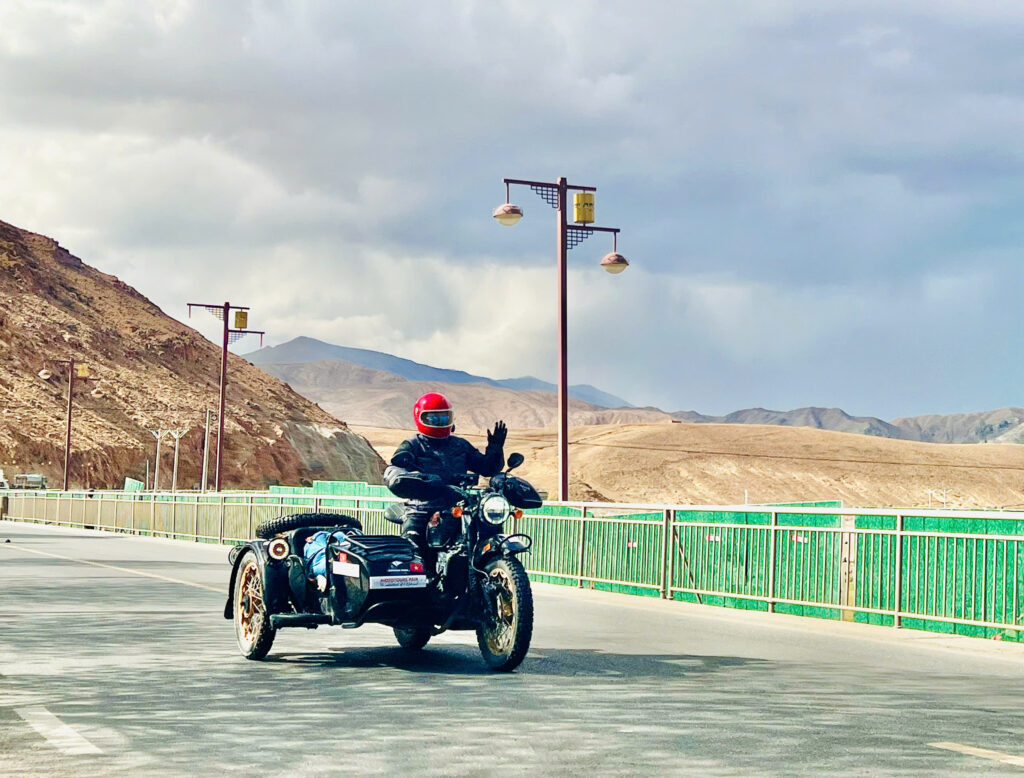
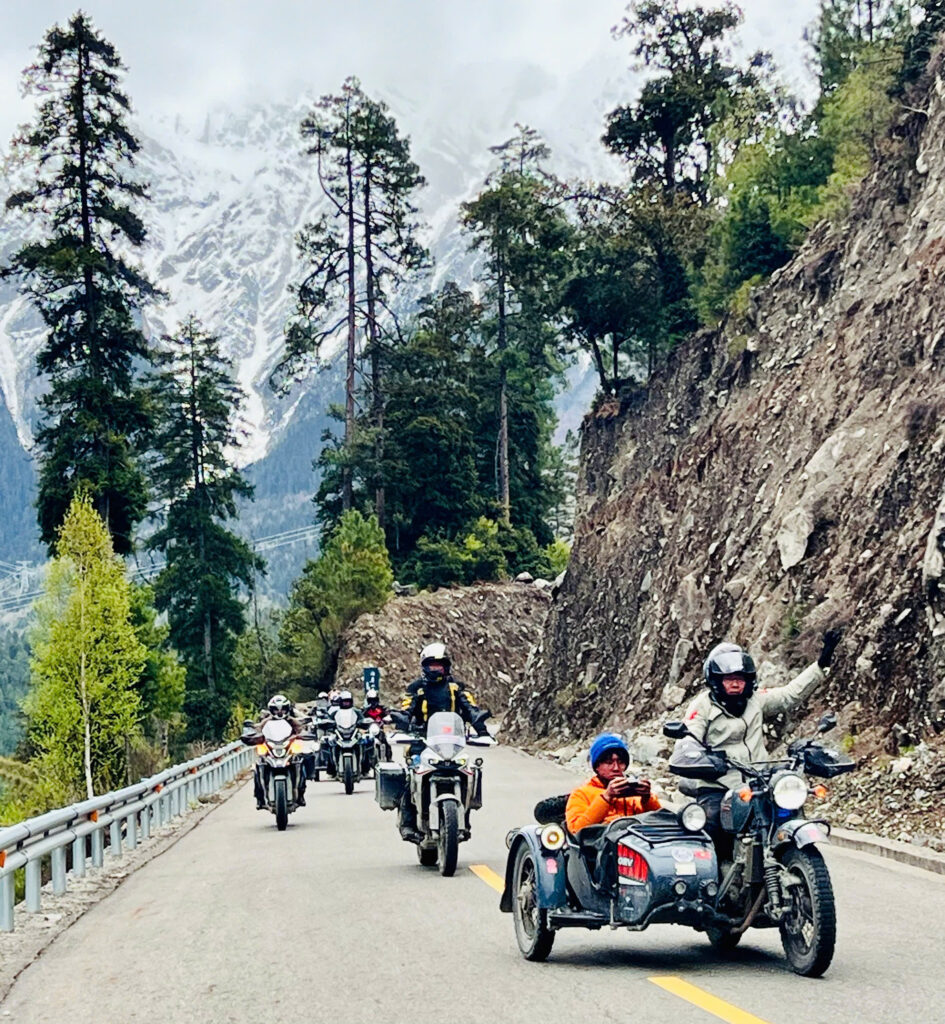
This morning, we will spend time exploring the ancient Jiada Salt Village and the only Catholic church in Tibet, with its unique historical and cultural features. After lunch, we will head to Markam.
The journey to Markam only takes about 2 hours, so we will spend time exploring the beautiful ancient villages along the Lancang River before climbing Honglashan Pass at an altitude of 4,448m. The road down to Markam reveals vast grasslands, a characteristic blend of Tibetan and Mongolian nomadic cultures. If there’s still time, we can rest or explore the surrounding prairies.
Markam is the intersection of G214 and G318, where the two branches of the Ancient Tea Horse Road (from Sichuan and from Yunnan) meet.
After a few days of getting used to the altitude, today we will truly feel the effects of it, so it is important to rest. Our bodies have already gone through a few passes around 4,500m to acclimatize. We will feel better tomorrow.
Day 8: 10/2/2026: MARKAM – BANGDAZHEN, 250km ~5h, (4,170m) – THE G318 CHALLENGE

Today we officially drive on the legendary G318 Highway, the longest and most majestic road in China, where every turn opens up a new story, a challenging but spectacular journey with high passes and magnificent mountain scenery. Get ready for dramatic challenges on the snow-covered Honglashan (4,448m) and Lawushan (4,338m) passes, and feel their majestic chill. The Lancang River (the upper Mekong) from Zhuka Bridge is a sight that will take your breath away. But today’s journey doesn’t stop there; there’s also Jueba Pass (3,930m) and Dongda Peak (5,008m)… We won’t be able to remember how many high passes and deep gorges we will have to cross today.
Day 9: 11/2/2026: BANGDAZEN – BOME, 300km ~5h, (2,725m) – HAIRPIN BENDS & THE MAJESTIC NUJIANG RIVER
Right in the morning, we will conquer Yelhasan Pass (4,658m), which will greet you with a challenging 17km descent, including 99 consecutive hairpin bends, followed by another 72 hairpin bends in the next 7km to reach the Nujiang Bridge. Here, you will have a spectacular view of the majestic Nujiang River, winding its way between steep cliffs—an unforgettable sight. The final destination for the day is the poetic Ranwo Lake (3,960m) after crossing Anjiula Pass (4,325m).
Ranwu Lake – The Legend of the Skeletal Lake and the Monkey War: “Ranwu” in Tibetan means “where dead bodies are piled up.” One legend tells that this lake is where the corpses of a water buffalo and a bull that fought fiercely to the death were piled up, and their bodies turned into the two mountains surrounding the lake. Another, more dramatic legend, tells of a group of mischievous monkeys that often harassed local farmers. To deal with them, the farmers devised a trick: they pretended to drink barley wine and fight with wooden swords. The monkeys, imitating this, killed each other after getting drunk, and their bodies piled up to form Ranwu Lake.
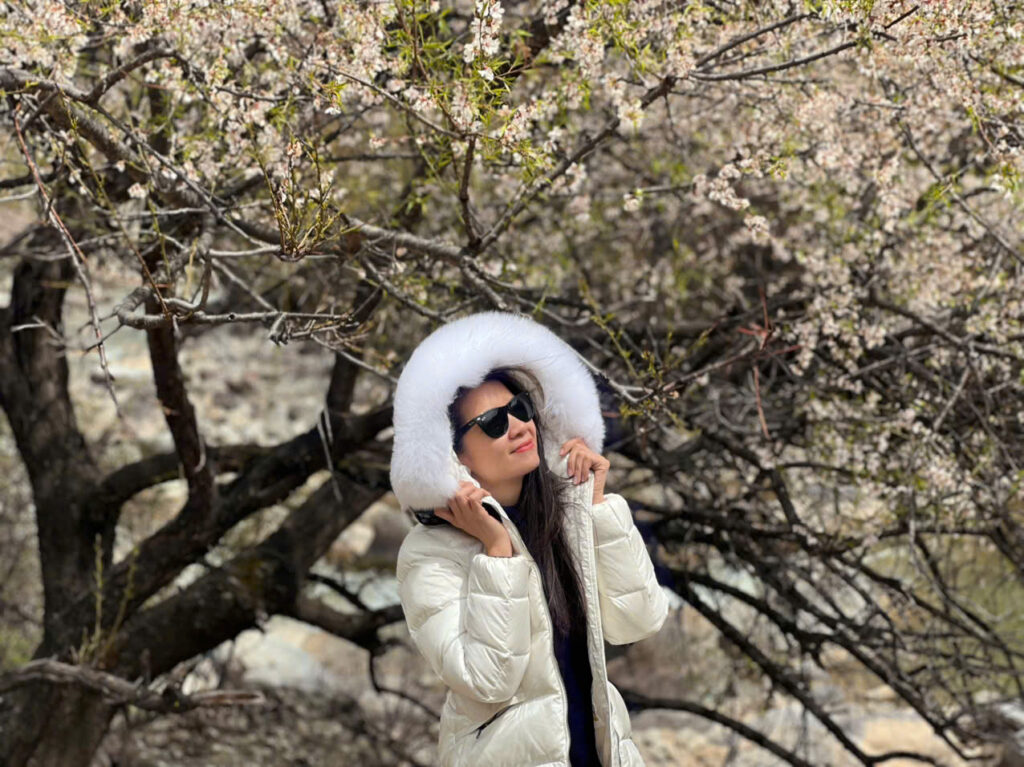
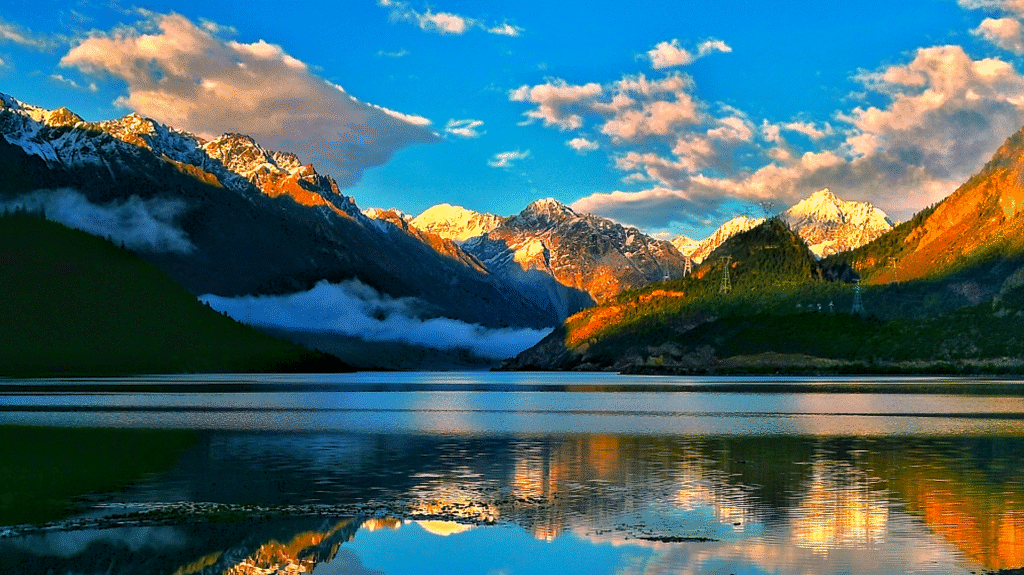
The journey continues to Bomi, known as the “Switzerland of Tibet” with its majestic mountain scenery, vast green forests, and magical, glistening glaciers under the sun.
Bomi is known as the “Switzerland of Tibet.” The name “Bomi” in Tibetan means “ancestor” because this is the birthplace of Nyatri Tsenpo, the first king of Tibet. Legend has it that one of the “hidden lands” mentioned in Guru Rinpoche’s prophecy lies within the borders of Bomi, attracting many Tibetan pilgrims here since the 7th century.
Day 10: 12/2/2026: BOME – NYINGCHI, 220km ~4h, (2,930m) – THE SWITZERLAND OF TIBET
Today’s journey will take you to Garang village, where the palace ruins of the Galang dynasty—one of China’s oldest dynasties—still stand, steeped in history. Next, let MotoTours Asia help you discover the legendary Parlung Tsangpo River, associated with a faithful love story and a mysterious curse that will ignite your curiosity. The next destination is the Tongmai Bridge – the famous “Death Bridge” on G318. Located in a perilous position, with steep terrain and frequent flash floods and landslides, the Tongmai Bridge is a dramatic challenge that requires courage for anyone who wants to conquer G318. After crossing Tongmai, you will arrive at Nyingchi – the “Switzerland of Tibet,” with the vast Lulang Forest, the majestic Namjagbarwa peak, and countless other spectacular sights waiting to be discovered. At the end of the day, join MotoTours Asia in conquering Sejila Pass (4,559m) before concluding a day full of interesting and memorable experiences.
Lulang Forest – The Place That Makes You Forget Your Way Home: “Lulang” in Tibetan means “the place that makes you forget your home,” a name that evokes a sense of enchantment and peace. This is a typical alpine meadow, where giant cypress trees, like the King Cypress believed to be over 2,500 years old (even older than the Buddha), are associated with Tonpa Shenrab Miwoche, the founder of the ancient Bon religion in Tibet.
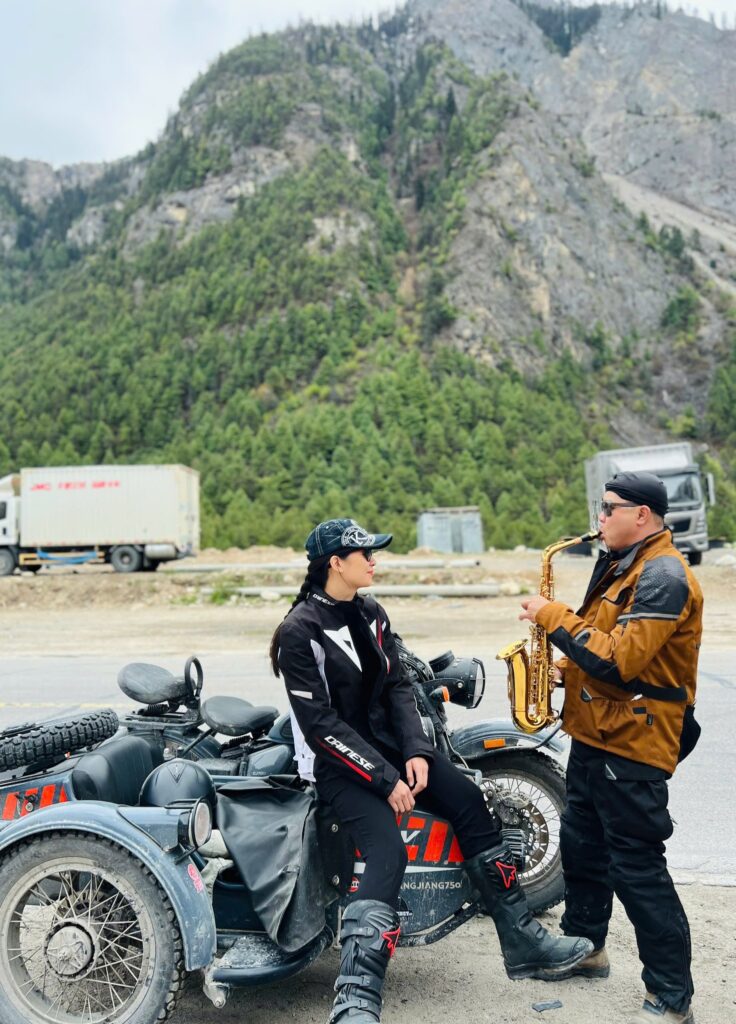
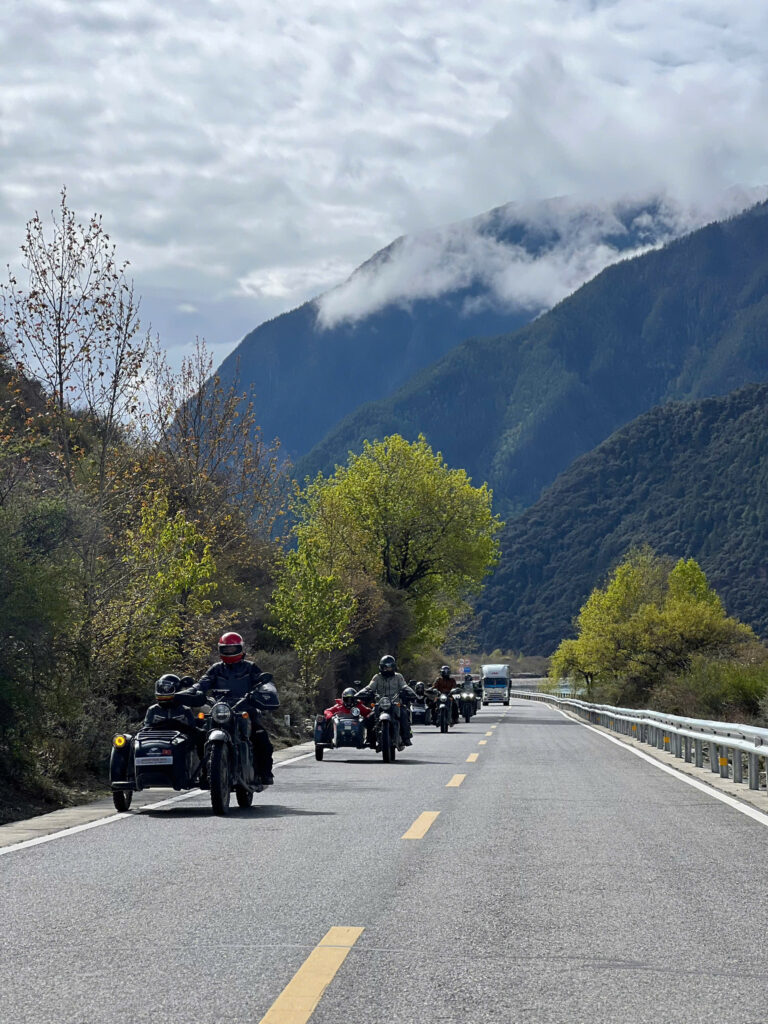
Day 11: 13/2/2026: NYINGCHI – LHASA, 390km, 3,656m – CONQUERING MILASHAN PASS & ARRIVING IN THE SACRED CAPITAL
The highly anticipated journey to Lhasa – the sacred capital of Tibet, often called the “land not for the faint of heart” due to its high altitude and harsh weather, requires resilience. This is a long and challenging stretch, but it is also an opportunity to witness the spectacular transformation of the landscape from lush Nyingchi to the vast Lhasa plateau.
Conquering Milashan Pass – The Peak of the Journey: The highlight of the day is conquering the majestic Milashan Pass, at 5,250m – the highest point on the entire route. Here, travelers will take a deep breath, feel the thin air characteristic of the plateau, and admire the vast, spectacular scenery of the Himalayas from above – an unforgettable sight. Milashan Pass is not just a geographical high point but is also associated with the legend of Milarepa, a famous Tibetan Buddhist saint. His life was an emotional journey from revenge to repentance, from suffering to liberation. Milarepa was once a dark sorcerer who used magic to avenge his family, causing the deaths of 35 people and a hailstorm that destroyed crops. His remorse drove him to seek Buddhism, becoming a disciple of the Great Master Marpa.
Marpa challenged Milarepa by making him build and destroy a tower many times, a grueling process to cleanse his karma. Milarepa attained enlightenment and became famous for his ability to withstand extreme cold with just a thin cotton robe. He once defeated a Bon sorcerer in a contest at Mount Kailash, where he flew to the top of the mountain in the blink of an eye, a testament to his extraordinary spiritual power. Crossing Milashan Pass is not only a physical victory but also a reminder of Milarepa’s journey of transformation and spiritual strength, inspiring travelers about the ability to overcome adversity.
Day 12: 14/2/2026: LHASA, 3,656m – EXPLORING THE SACRED CAPITAL
A free day to completely immerse yourself in the sacred atmosphere and rich culture of Lhasa. You can choose to visit iconic landmarks such as the majestic Potala Palace – the eternal symbol of Tibetan Buddhism, the sacred Jokhang Temple, or simply stroll along the bustling Barkhor Street, the most vibrant old quarter in Tibet, and feel its unique rhythm of life. This is also an ideal opportunity to rest, recharge after long days on the bike, and prepare for the next leg of the journey.
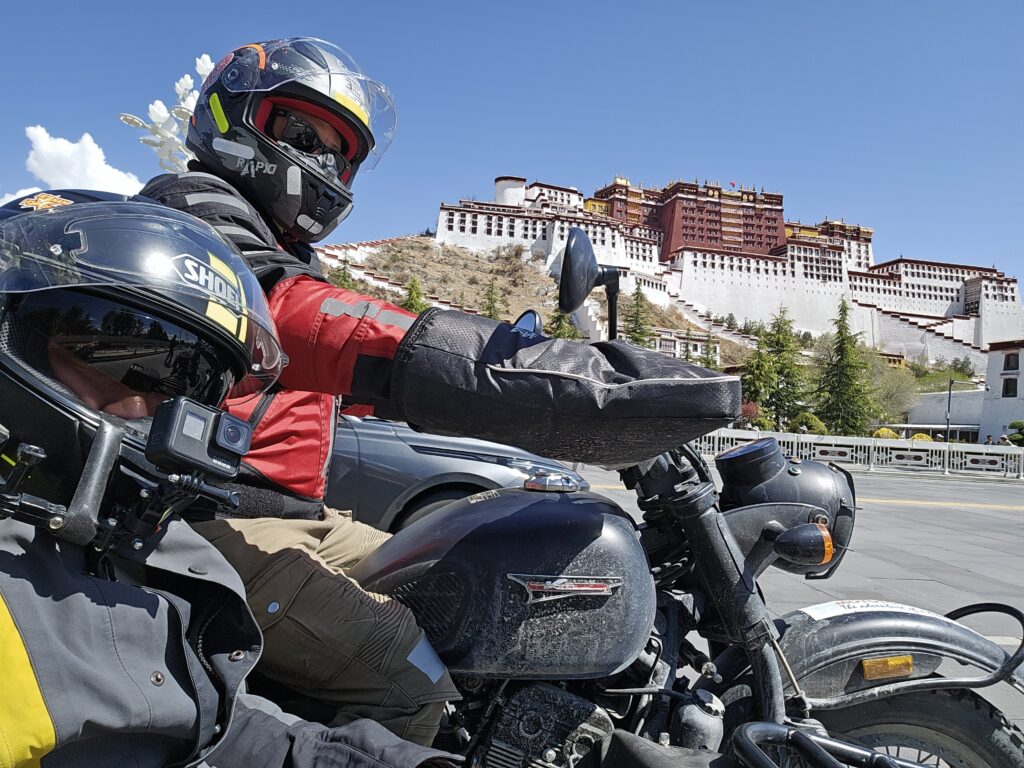
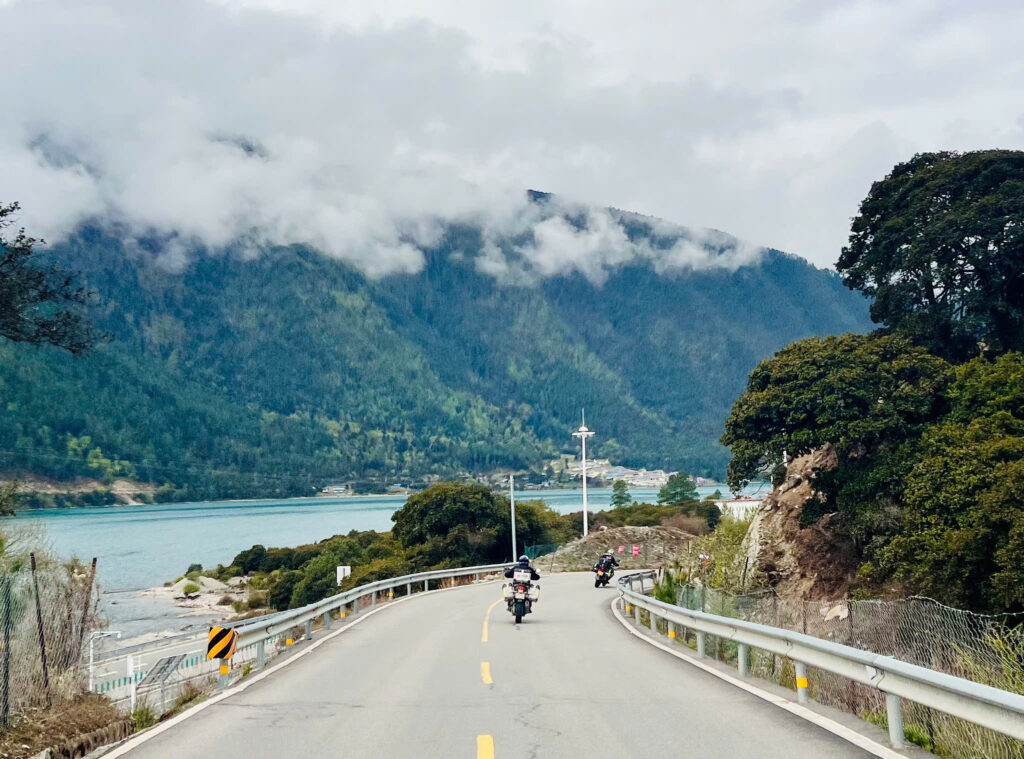
You can also feel the atmosphere of preparing for the Losar festival here, getting more hurried every day and the city becoming filled with colors.
Jokhang Temple – Where the Dragon Sleeps: Jokhang Temple, a sacred temple housing the revered 12-year-old statue of Sakyamuni Buddha, is a must-visit destination. Legend has it that Lhasa was once a wasteland, and Princess Wencheng predicted through Chinese astrology that the area was a “dragon’s gate,” requiring a monastery to be built to suppress the dragon. Another legend tells that the location of Jokhang Temple was once a lake, and Songtsen Gampo promised Princess Khidzun that a monastery would be built wherever his ring fell. The ring fell into the lake, and immediately, the lake’s surface was filled with light, and a nine-story white tower appeared in the light. This massive construction was carried out by thousands of goats carrying clay, and the original temple was named Ruosa in their honor, as “goat” is “Ruo” and “clay” is “Sa” in Tibetan. These stories not only enrich the history of the temple but also show the deep cultural exchange and belief in the power of the gods in shaping the landscape and history.
Day 13: 15/2/2026: LHASA – LHATSE, 410km, 4,035m – ALONG THE LEGENDARY YARLUNG RIVER
The journey continues, winding along the majestic Yarlung River, a powerful symbol of Tibet, heading towards Shigatse. This river, also known as the Brahmaputra downstream, is not only a major waterway but also the highest river in the world, flowing at an average altitude of 4,000 meters. The name “Tsangpo” in Tibetan means “mighty,” reflecting its power and importance. Along the way, travelers will challenge themselves on the Younongla Pass (4,534m) and admire the spectacular beauty of the endless Himalayas stretching out before them, truly feeling the vastness of the heavens and the earth.
In the morning, we will take the highway for about 250km to Shigatse and spend the afternoon on the remaining 160km, which is the most densely trafficked section on the Tibetan plateau.
Lhatse – History and Legends: Lhatse is an ancient land with a rich history. The Lhatse Sangngag Rabten Ling Monastery (also known as Lhatse Monastery) was founded in 1668 by Serpa Yeshe Sengge. This monastery is situated in a strategic location where the mountains in front and behind look like the confluence of two elephants, an auspicious sign. To the right of the mountain, two rivers intersect like a mother dragon and a baby dragon meeting, surrounded by fragrant forests. The shape of the land resembles an eight-petaled lotus, and also like the Dharma Wheel in the sky, continuously radiating a pleasant fragrance.
According to legend, 13 people achieved “rainbow body” at Lhatse Monastery, turning it into a holy land where the Nyingma Palyul Lhatse lineage flourished. Even when Serpa Yeshe Sengge was a child, his parents and servants saw two lions guarding him as he slept, so he was named Guardian Lion. On the 21st day after he was born, at sunrise, a peacock fed him a lucky fruit, and after eating it, his body transformed. To this day, a tree transformed from a peacock feather that fell down and the footprints of Serpa Yeshe Sengge from when he was a child still remain.

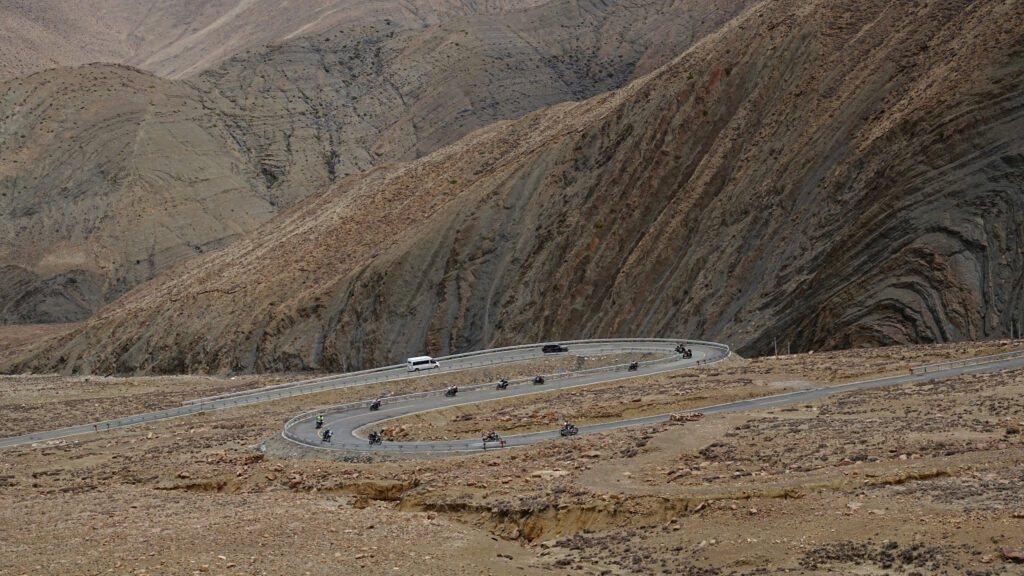
Day 14: 16/2/2026: LHATSE – EVEREST BASE CAMP – TINGRI, 180km + 100km by bus, 4,348m – TOUCHING THE ROOF OF THE WORLD
Wake up early, full of energy, and prepare for an emotional day as we will finally witness the majestic Everest peak – the “Roof of the World” – a dream come true! The journey takes travelers over two challenging passes: Jiacuola (5,252m) and Jiawula (5,208m), which open up spectacular views of the endless Himalayas, with their pristine snow-capped peaks. After that, travelers will board an electric bus and travel to Everest Base Camp (5,200m) to admire the breathtaking, majestic beauty of the highest peak on the planet – a truly unforgettable experience.
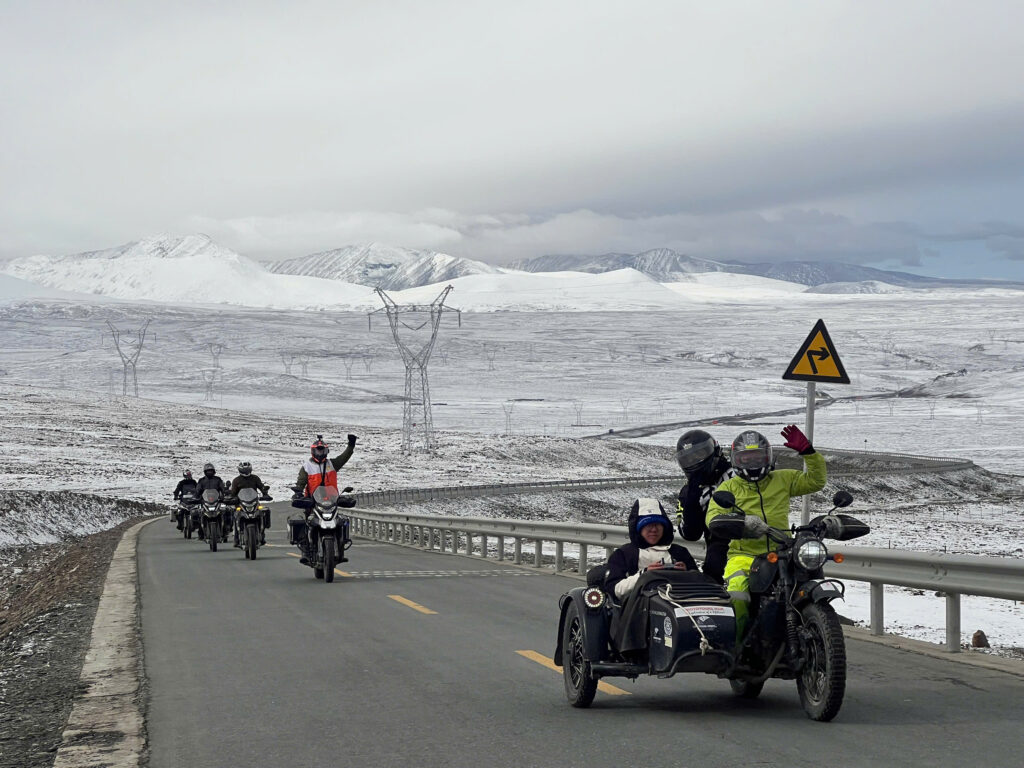
The Final Challenge & Spiritual Affirmation – Where Humans Touch Their Limits: Reaching EBC in February, amid extreme cold and snow, is the pinnacle of this challenge. The snow-covered landscape under the clear winter sky offers a superb view of the peaks, creating a unique “winter wonderland” feeling that you cannot experience at any other time of the year.
Today is also New Year’s Eve according to the Lunar Calendar, so we will hold a New Year’s Eve party together in this snowy land.
Day 15: 17/2/2026: TINGRI – DINGGYE (LOSAR EVE), 140km, 4,400m – THE MYSTICAL LOSAR EVE
Today is a special day, the first day of the Lunar New Year and also New Year’s Eve according to the Tibetan calendar, marking Losar Eve, the most sacred time of the year, right before the new year begins. The journey from Tingri will take us to an ancient town with the famous Sakya Monastery, where you will be immersed in the atmosphere of preparing for the new year.
We will arrive in town for lunch, check into the hotel, and rest before visiting Sakya Monastery and helping to prepare for the New Year’s Eve party as well as participating in the monastery’s New Year’s Eve ceremony.


Sakya Monastery – A Center of Power and Knowledge: Sakya Monastery is one of the most impressive monasteries in Tibet. The monastery is divided into two parts by the Trum-chu River. The exterior of the monastery stands out with its high black walls and watchtowers at the four corners. The three main colors of the monastery – white, red, and black – symbolize Rig Sum Gompo (the three Bodhisattvas): Manjushri, Avalokiteshvara, and Vajrapani.
Sakya Monastery belongs to one of the four main schools of Tibetan Buddhism – Sakyapa, with the distinctive feature that the lineage of lamas is inherited through the family. Sakya once played a crucial role in Tibetan history, serving as the political center of Tibet and the capital from 1268 to 1354 under the rule of Kublai Khan.
The main hall, Lhakhang Chenmo (built in 1268), is an impressive structure with 16-meter high walls and is the only ancient building that was not destroyed during the Cultural Revolution. Inside is the largest collection of scriptures in Tibet, with 84,000 scrolls discovered in a monastery wall in 2003. Ancient frescoes from the 13th-14th centuries depict mandalas, Sakya patriarchs, and scenes from the Bardo (the state after death).
Day 16: 18/2/2026: SA’GYA LOSAR – IMMERSING IN THE NEW YEAR FESTIVAL WITH LOCALS
Today is the First Day of the Losar New Year (Losar Day 1), a sacred moment that marks a promising new beginning on the land of the Buddha. We have a unique opportunity to explore neighboring villages and celebrate with the locals, experiencing the most authentic Losar customs.
Losar at Sakya Monastery – Immersing in the community atmosphere: On the first day of Losar, members of the Tibetan community often gather at monasteries like Sakya to participate in communal prayers and offer rituals. We have the opportunity to witness the monks in their most beautiful traditional robes (chubas) and feel the sacred atmosphere of the prayers.
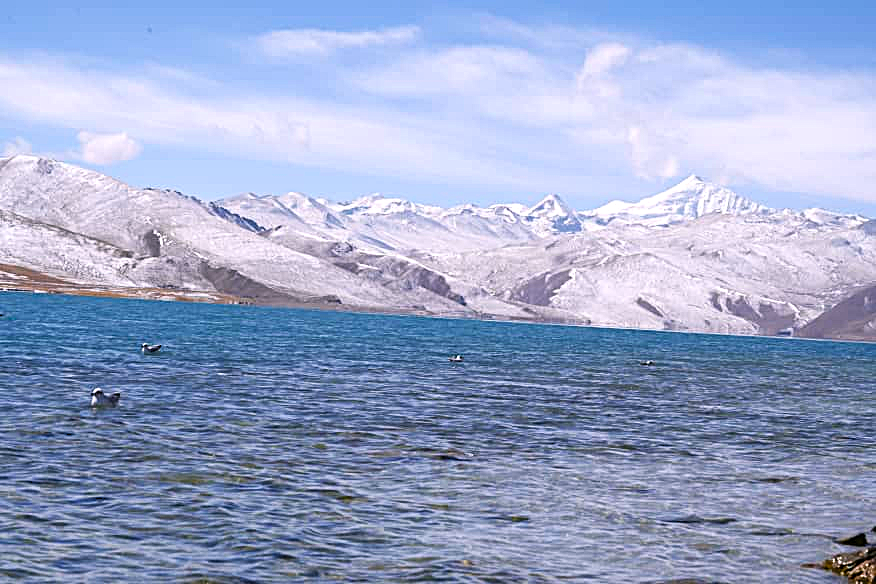

Although the monastery’s internal rituals may not be fully open to the public, we can still observe the activities outside and in the public areas of the monastery. Offering rituals to monks and lamas is an act of accumulating merit. We can see butter sculptures (torma) placed on altars or in a chemar bo (offering box), along with fried khapsay cakes and other offerings.
This is a great time to exchange “Tashi Delek” (good luck) greetings with the locals and feel the warmth of Tibetan hospitality. We will explore the neighboring villages of Sa’Gya and join Tibetan families to celebrate Losar, with lavish meals, music, and traditional games.
Day 17: 19/2/2026: DINGGYE – GYANTSE, 220km, 3,977m – EXPLORING WILD LANDS AND SPREADING LOSAR BLESSINGS
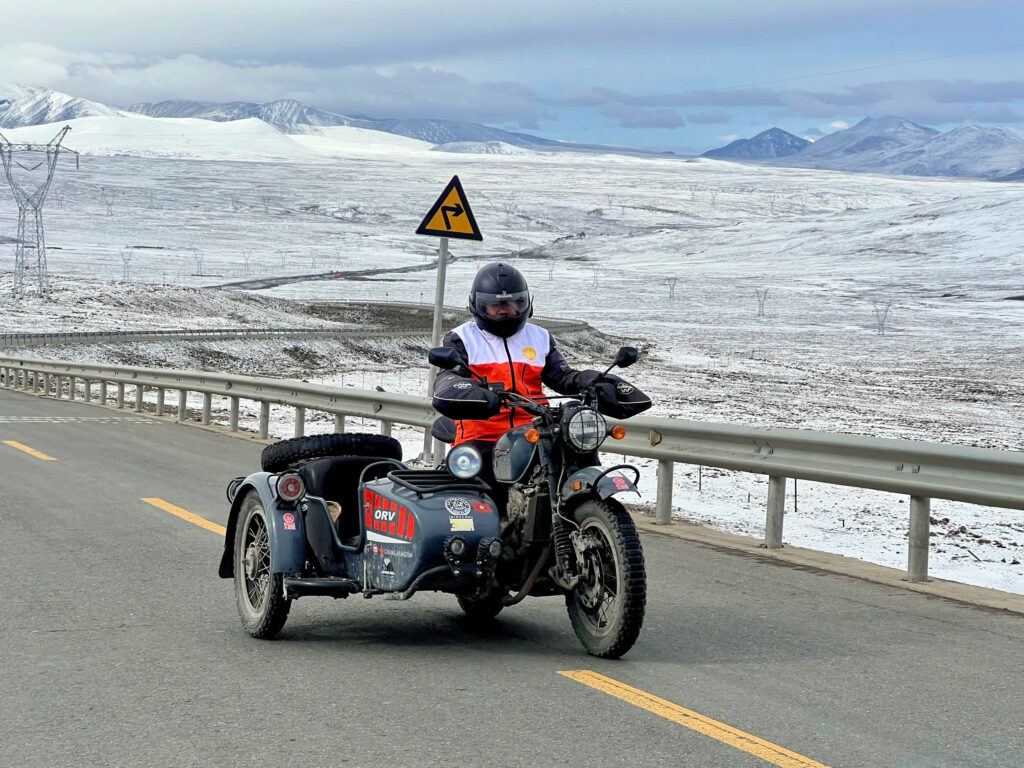
Today’s journey follows a new route that few tourists have explored, to discover the unique destinations of this wild Tibetan land.
Losar Day 2 (Gyalpo Losar) – Spreading Blessings: February 19, 2026, is Losar Day 2, also known as Gyalpo Losar (King’s Losar). Today’s activities will be bustling on the streets, in villages, and monasteries:
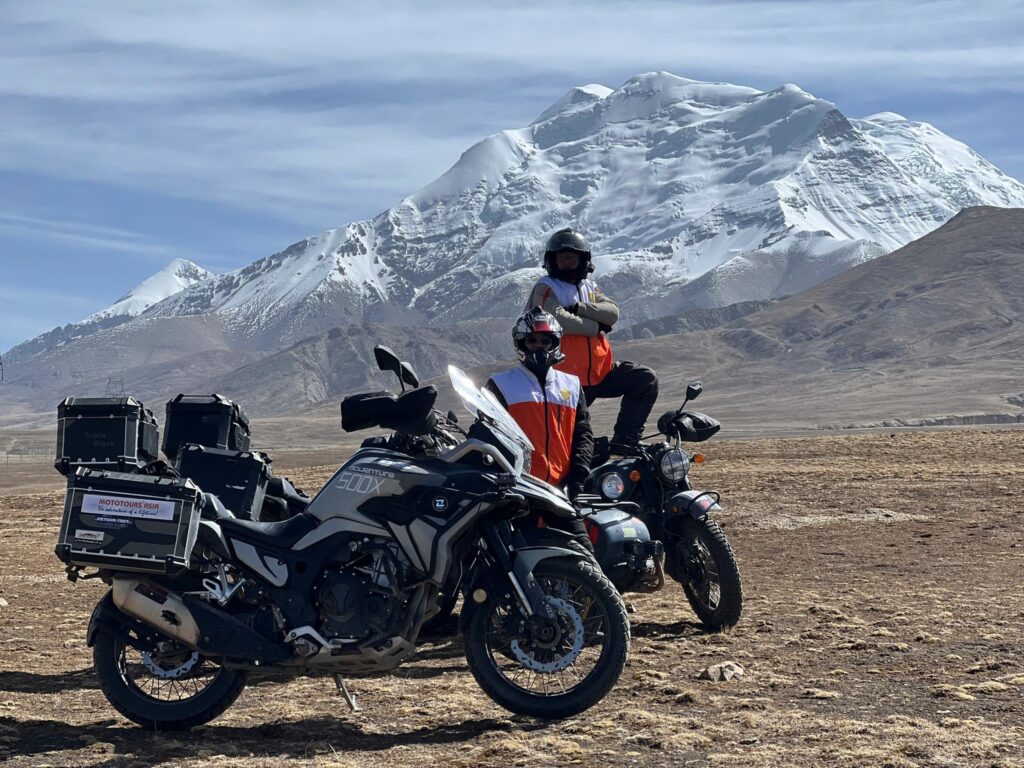
Raising prayer flags: Raising new darchor (long, vertical prayer flags) on rooftops to let the prayers fly with the wind.
Prayers and gratitude: Families visit temples to pray and give thanks, offering gifts to monks and lamas to show their devotion.
Cham dance: Monasteries may perform colorful Cham dances (masked dances) to ward off evil spirits and symbolize the victory of good over evil.
Visiting: Tibetans begin to visit relatives and friends, exchanging “Tashi Delek” greetings and hada (white ceremonial scarves), spreading joy and camaraderie.
Gyantse – Historical Town and Baiju Monastery: Upon arrival in Gyantse, we will have time to explore this charming small town and visit the 15th-century Baiju Monastery – a unique spiritual destination where three major schools of Tibetan Buddhism (Sakya, Kadam, and Gelug) converge. We will also participate in the Losar festival at this monastery.
Day 18: 20/2/2026: GYANTSE – LHASA, 260km, 3,656m – SACRED LAKE & THE FINAL PASSES

Today, we will admire the majestic and mysterious beauty of Yamdrok-tso Lake (Yamdrok Lake) – one of the three most sacred lakes in Tibet. With its crystal-clear turquoise water, surrounded by majestic snow-capped mountains, Yamdrok Lake is a natural masterpiece that will leave you in awe.
Conquering the Final Passes and Natural Wonders: We will continue to conquer the last two passes, Simila (4,352m) and Karuola (5,039m), before returning to Lhasa, completing the challenging routes. Along the way, we will see the sacred Nyenchen Khangsar Mountain Range (7,782m) and the mystical Korola Glacier, the final natural wonders of the trip. Today is also the day you will be overwhelmed by the beauty of this final, “happy ending” route.
Upon arriving in Lhasa, we will drive to our gathering point, after which a bus will take the group to the hotel. This marks the end of our driving journey. Tonight, the group will hold a farewell party for the tour guides, reflecting on the unforgettable memories made on the Roof of the World.
Day 19: 21/2/2026: LHASA, FAREWELL TO THE SACRED LAND – UNFORGETTABLE MEMORIES
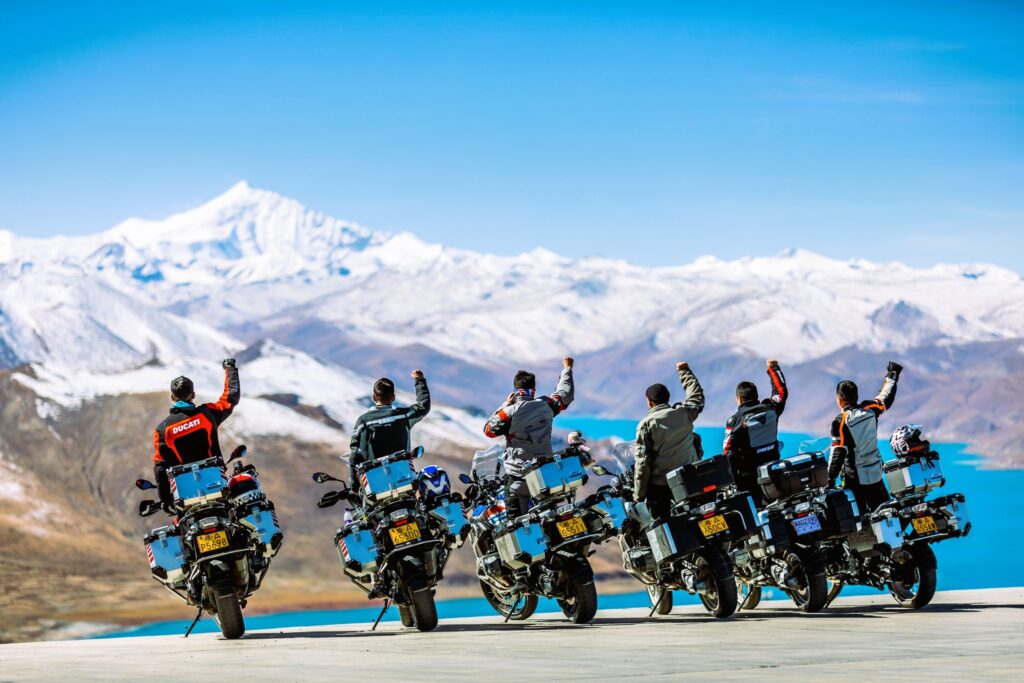
After our final breakfast, you will have free time to wander, shop for meaningful souvenirs, or revisit your favorite landmarks in Lhasa to capture a few more precious moments before heading to the airport, officially concluding this emotional and unforgettable journey with MotoTours Asia.
I. TOUR PRICE (USD/person)
I.1. FOR THE 19-DAY ITINERARY
(a). DRIVING YOUR OWN VEHICLE FROM VIETNAM: (Tour price depends on the total number of vehicles in the group at the start)
| Vehicle Type/Number of Vehicles in Group | 11-12 | 13-14 | 15-16 | 17+ |
| Motorcycle | ||||
| 1 person 1 motorcycle | $4,730 | $4,500 | $4,308 | $4,154 |
| 2 people 1 motorcycle | $3,615 | $3,500 | $3,423 | $3,308 |
| Car | ||||
| 1 person 1 car | $6,115 | $5,730 | $5,385 | $5,154 |
| 2 people 1 car | $4,192 | $3,962 | $3,808 | $3,692 |
| 3 people 1 car | $3,538 | $3,385 | $3,269 | $3,192 |
| 4 people 1 car | $3,192 | $3,115 | $3,000 | $2,962 |
| 5 people 1 car | $3,000 | $2,923 | $2,846 | $2,808 |
- Single supplement fee: $596
- Children under 14: 70% of the adult price (sharing a room with parents; a double room is 100% of the price. If there are 2 children, only 1 child is eligible for the discount).
I.2. FOR THE 16-DAY ITINERARY (Starting from Lijiang, joining the group from Vietnam. This option uses vehicles in China and is included in the tour price)
| Vehicle Type/Number of Vehicles in Group | 11-12 | 13-14 | 15-16 | 17+ |
| Kove 500/525 | ||||
| 1 person 1 motorcycle | $5,115 | $4,846 | $4,654 | $4,500 |
| 2 people 1 motorcycle | $3,730 | $3,615 | $3,500 | $3,423 |
| Kove 800 / CFMoto 800 | ||||
| 1 person 1 motorcycle | $5,462 | $5,230 | $5,115 | $4,923 |
| 2 people 1 motorcycle | $3,923 | $3,808 | $3,730 | $3,654 |
| Chiang Jiang Sidecar CJ750 | ||||
| 1 person 1 motorcycle | $7,346 | $7,115 | $6,885 | $6,730 |
| 2 people 1 motorcycle | $4,885 | $4,730 | $4,654 | $4,538 |
| BMW R1300GS | ||||
| 1 person 1 motorcycle | $8,385 | $8,115 | $7,923 | $7,769 |
| 2 people 1 motorcycle | $5,346 | $5,230 | $5,154 | $5,077 |
| BMW R1250GS | ||||
| 1 person 1 motorcycle | $8,654 | $8,423 | $8,230 | $8,038 |
| 2 people 1 motorcycle | $5,500 | $5,385 | $5,308 | $5,192 |
| BMW R1300GS | ||||
| 1 person 1 motorcycle | $8,962 | $8,692 | $8,577 | $8,308 |
| 2 people 1 motorcycle | $5,654 | $5,538 | $5,423 | $5,346 |
| Tank 300 | ||||
| 1 person 1 car | $7,538 | |||
| 2 people 1 car | $4,846 | |||
| 3 people 1 car | $3,962 | |||
| 4 people 1 car | $3,500 | |||
- Passengers on the Support Bus
| Number of Passengers | 8 | 9 | 10 | 11 | 12 |
| Price (USD) | $2,962 | $2,885 | $2,730 | $2,654 | $2,577 |
- Single supplement fee: $750
- Children under 14: 70% of the adult price (sharing a room with parents; a double room is 100% of the price. If there are 2 children, only 1 child is eligible for the discount).
- Total number of vehicles: Calculated by the number of vehicles in the group from Vietnam + the number of rented vehicles in China (starting from Lijiang). The group from Vietnam will depart earlier and meet the group from Lijiang to form a single caravan.
NOTES: (some services are conditional)
- A group of 15 vehicles will have two group leaders from Vietnam (who will drive the two lead vehicles).
- Groups of 15 vehicles or more will include camping gear and tents.
- Groups of 17 vehicles or more will have one support bus.
- Groups of 12 vehicles or more will have one professional videographer.
 II. WHAT IS INCLUDED IN THE TOURPRICE?
II. WHAT IS INCLUDED IN THE TOURPRICE?
II.1.
FOR THE OPTION STARTING FROM HANOI WITH YOUR OWN VEHICLE (17 days)
- Permits and customs procedures for vehicles at border crossings (Tay Trang/Pang Hoc, Boten/Mohan, Ping Xiang/Huu Nghi Quan).
- Deposit for temporary import/re-export of vehicles to China (70% of the vehicle’s value as assessed by Chinese Customs).
- Temporary license plate fee (China) for the vehicle.
- Temporary Chinese driver’s license (valid for 3 months), processed directly with no limit on the number of licenses.
- All necessary documents: vehicle rental contracts, power of attorney (documentation, translation, and notarization of all documents into Lao and Chinese) for your vehicle to the transport company and customs clearance agent at the border gates.
- Travel expenses for tour guides handling procedures at the border gates:
- One (01) Chinese tour guide from Chengdu to Mohan to handle entry procedures, driver’s license exchange, etc., and accompany the group to Lijiang before flying back to Chengdu.
- One (01) tour guide for a round trip from Chengdu to Pingxiang/Huu Nghi Quan (to handle vehicle re-export procedures back to Vietnam).
II.2.FOR THE OPTION STARTING FROM LIJIANG (14 days, renting a vehicle in China)
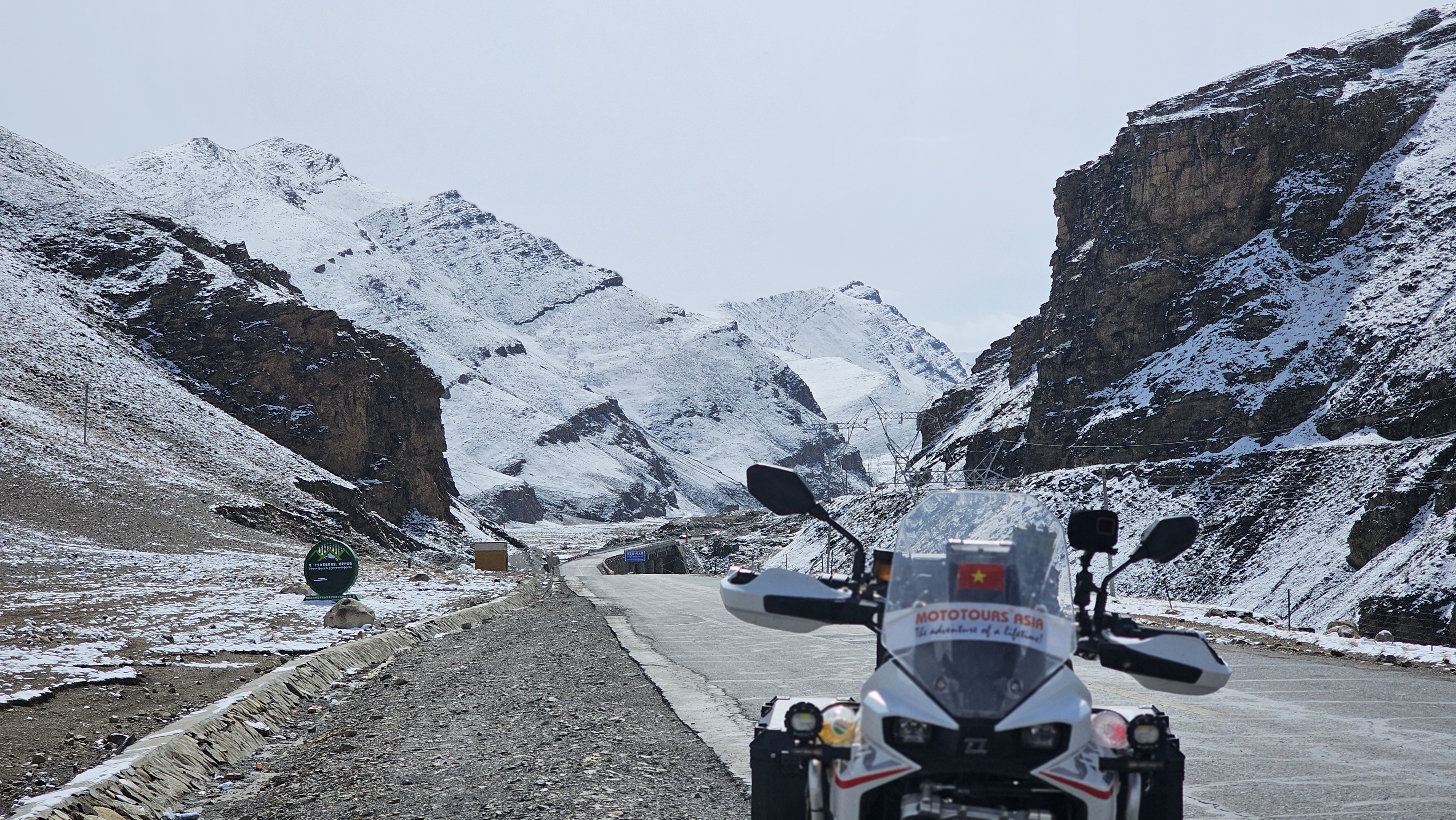
- Vehicle rental fees, vehicle transport from Chengdu to Lijiang (before the tour), and from Lhasa back to Chengdu (after the tour). The total actual rental period is up to 23 days.
- Cost of building and disassembling wooden crates for vehicle transport.
- Driver’s license exchange with a super VIP service (you only need to send soft copies of your documents; the temporary Chinese driver’s license will be sent directly to your hotel in Lijiang before the tour starts). One (01) driver’s license per motorcycle and two (02) driver’s licenses per car. For additional licenses, there is a surcharge of $300 per license.
- Vehicle transport insurance before and after the tour.
II.3. SERVICES FOR BOTH GROUPS
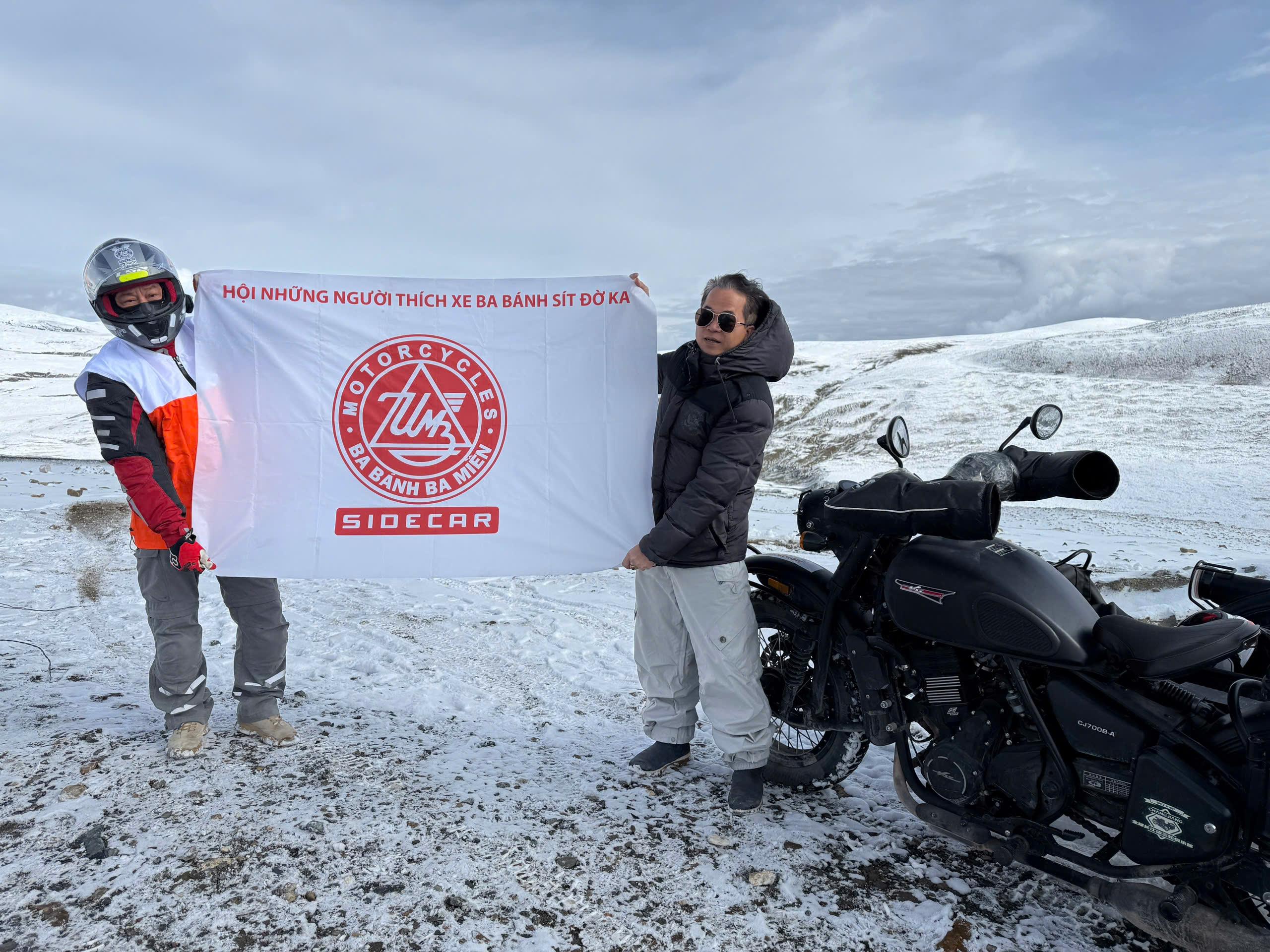
- Permits to enter the Tibet Autonomous Region and all necessary permits for the travel route in Tibet.
- 3-4 star standard hotels (with priority criteria: heating, in-room oxygen systems, and convenience for the caravan).
- All meals (from the welcome dinner in Dien Bien Phu until the final breakfast in Lhasa, excluding the farewell party dinner organized by the guests for the tour staff).
- Bottled drinking water is always available on the escort truck.
- Daily, we will organize camping with a tea, coffee, snacks, and fresh fruit party at the most scenic spots or have a picnic lunch.
- Two (02) experienced international caravan tour guides leading the group, driving two (02) lead vehicles (for groups of 15 vehicles or more).
- One (01) Tibetan tour guide to assist with legal procedures from Lijiang until the end of the journey (including the Lhasa – Lijiang airfare).
- One (01) professional videographer/photographer with the most modern equipment, including a drone, GoPro, camera, etc., accompanying the group from Lijiang until the end of the journey. All travel, accommodation, and meal expenses (airfare to Lijiang before the tour and from Lhasa after the tour) are included.
- Altitude sickness medication and other medications to alleviate altitude sickness symptoms throughout the journey.
- Oxygen bottles on the escort bus (for emergency use only).
- Cardo walkie-talkie communication system for all drivers (maximum 15 devices per group).
- A 5G e-SIM with no blocks in mainland China for 15 days in China.
- Airport transfer cars: between airports and hotels, from the vehicle gathering point to the hotel, etc.
- Two (02) escort vehicles accompanying the group from Lijiang until the end of the journey:
- One (01) truck for carrying group gear, broken motorcycles, or when a driver feels tired and has no one to help drive, or in harsh weather conditions.
- One (01) bus following the motorcycle group with available seats for any biker’s needs. The bus also provides an opportunity for those who cannot drive themselves but still want to conquer this route at the best cost.
- Vehicle insurance: Third-party liability insurance.
- Insurance for the driver and passenger for self-driving in China, with compensation up to 1,000,000 CNY (One million Chinese Yuan).
- VIP international travel insurance package for Vietnamese guests with compensation up to $123,077, including cancellation insurance.
III. WHAT IS NOT INCLUDED IN THE TOUR PRICE?
- Airfare (~$300/person from Lhasa back to Vietnam, depending on the itinerary and booking time).
- Scenic spot tickets (~$77, depending on the number of attractions visited).
- Fuel for vehicles (~$154 – $231 for a motorcycle, $308 – $385 for a car. Depending on the vehicle type and driving experience on passes).
- Highway tolls (if any for cars, motorcycles are free).
- Farewell party in Lhasa (organized by guests to thank the tour staff).
- Tips for the tour staff: $200/guest ($100/guest for those on the bus).
- China visa (for residents of northern Vietnam: $88/guest, for central and southern Vietnam: $122/guest).
- Anything not listed in section (II).
- Vehicle transport from Lhasa back to Vietnam, wooden crate construction for motorcycles before transport (contact our consultant for a specific quote).
- If you choose to transport your vehicle to Dien Bien and fly directly to Dien Bien: airfare and vehicle transport costs are not included in the tour price.
- New Year’s lucky money and small meaningful gifts from Vietnam for children, the elderly, etc., during the Tet holidays.

IV. REQUIRED DOCUMENTS
IV.1. FOR THE PROGRAM (HANOI – LAOS – YUNNAN – TIBET 17 DAYS) SELF-DRIVING FROM VIETNAM
- Passport (valid for 6 months until the end of the tour), with place of birth information noted or supplemented in the passport. If the current passport has never had a visa or is new, you need to supplement with a Citizen ID card and proof of residence (CT07).
- Driver’s license corresponding to the registered vehicle type.
- 4×6 portrait photos (soft file, white background, no glasses, hair not covering the forehead).
- Vehicle registration (in your name).
- Certificate of Technical Safety and Environmental Protection Inspection (for cars).
- Power of attorney (if borrowing a vehicle), vehicle rental contract (if renting a vehicle): notarized translation from Vietnamese to Lao and Vietnamese to Chinese (3 sets of each language).
- Photos of the vehicle from 4 sides (front, back, right, left).
IV.2. FOR THE PROGRAM (YUNNAN – TIBET 14 DAYS) RENTING A VEHICLE IN CHINA
- Passport (valid for 6 months until the end of the tour), with place of birth information noted or supplemented in the passport. If the current passport has never had a visa or is new, you need to supplement with a Citizen ID card and proof of residence (CT07).
- Driver’s license corresponding to the registered vehicle type.
- 4×6 photos (soft file, white background, no glasses, hair not covering the forehead).
V. NOTES FOR VEHICLES FROM VIETNAM

- Motorcycles:
- Minimum 300cc.
- Adventure models are recommended.
- You must be confident in driving at speeds of 100-120km/h on the highway.
- Cars:
- Under 10 seats.
- 4×4 SUV and Pickup models are recommended.
- Important Notes:
- All vehicles must be checked, overhauled, maintained, and test-driven before the trip.
- For motorcycles, you need three large boxes to carry personal belongings for the entire journey.
- Vehicles need to have new tires.
- You need to bring basic tools for your vehicle.
- You need to bring spare parts that might break for your vehicle.

VI. VEHICLE TRANSPORT FROM LHASA BACK TO VIETNAM
- We will transport vehicles from Lhasa to Xuan Cuong parking lot, Huu Nghi border gate, Lang Son.
- All motorcycles will be packed in wooden crates (3-5 days depending on the number of vehicles).
- The estimated transport time from Lhasa to Xuan Cuong parking lot, Huu Nghi border gate, Lang Son is 10 days.
- Transport fees, wooden crate packing, insurance (50,000 CNY): an average of $519 per motorcycle. Please contact us for a specific quote for your vehicle.
- Transport fees and customs procedures for cars (insurance 200,000 CNY): $1,269 per car. Please contact us for a specific quote for your vehicle.
- You can increase the insurance value for your vehicle during transport by purchasing an additional package: for 30 CNY, you will get an additional 10,000 CNY in coverage.
- If you want us to transport the vehicle directly to your home, please contact us for a consultation.
V. Tour Calendar
CNTb261_Tet: 3/2 – 21/2

